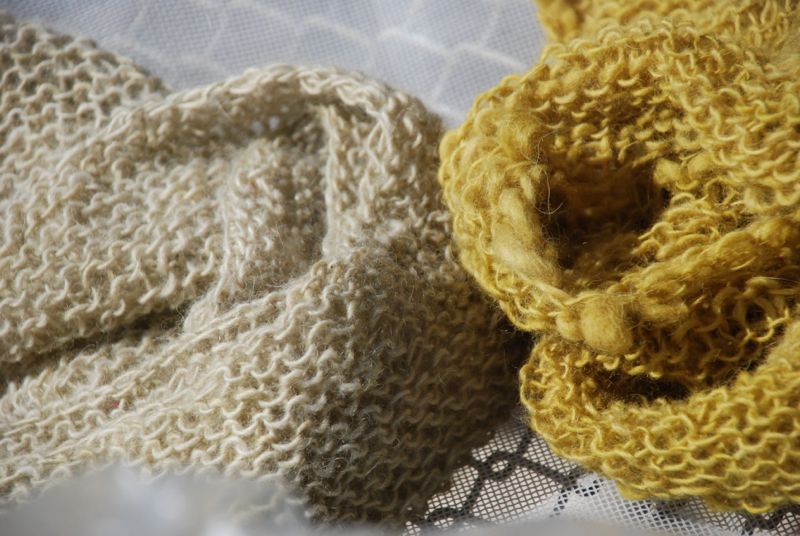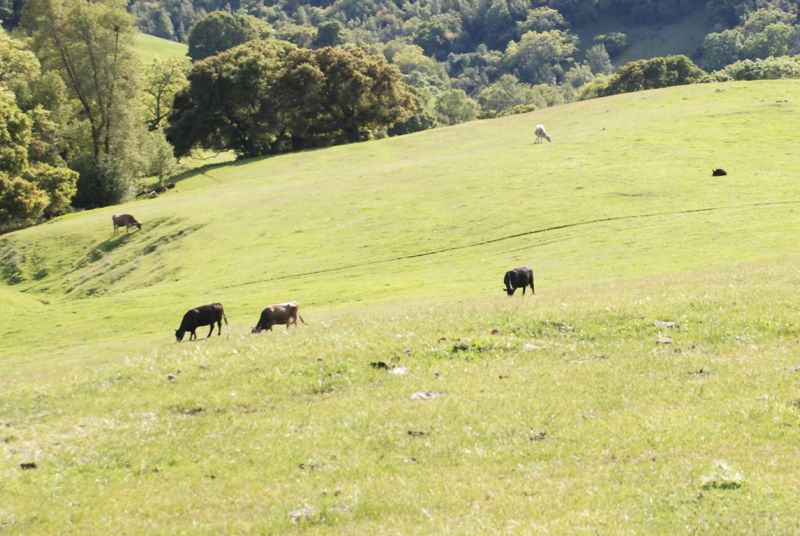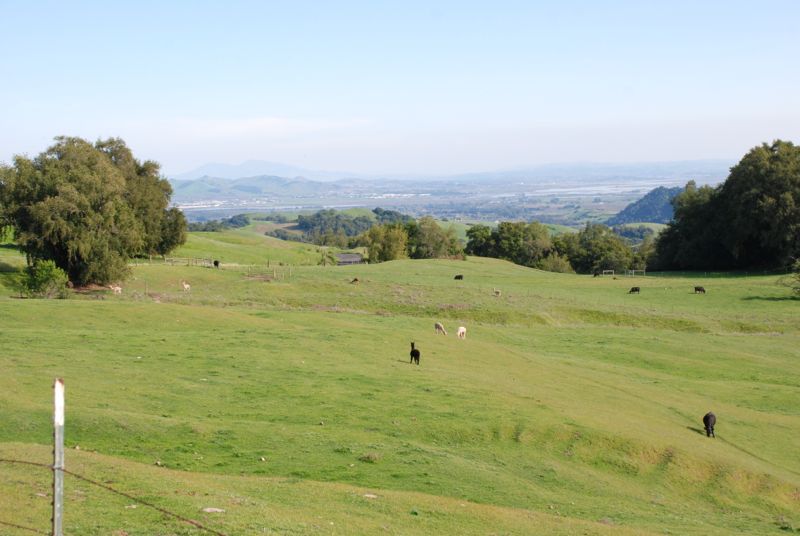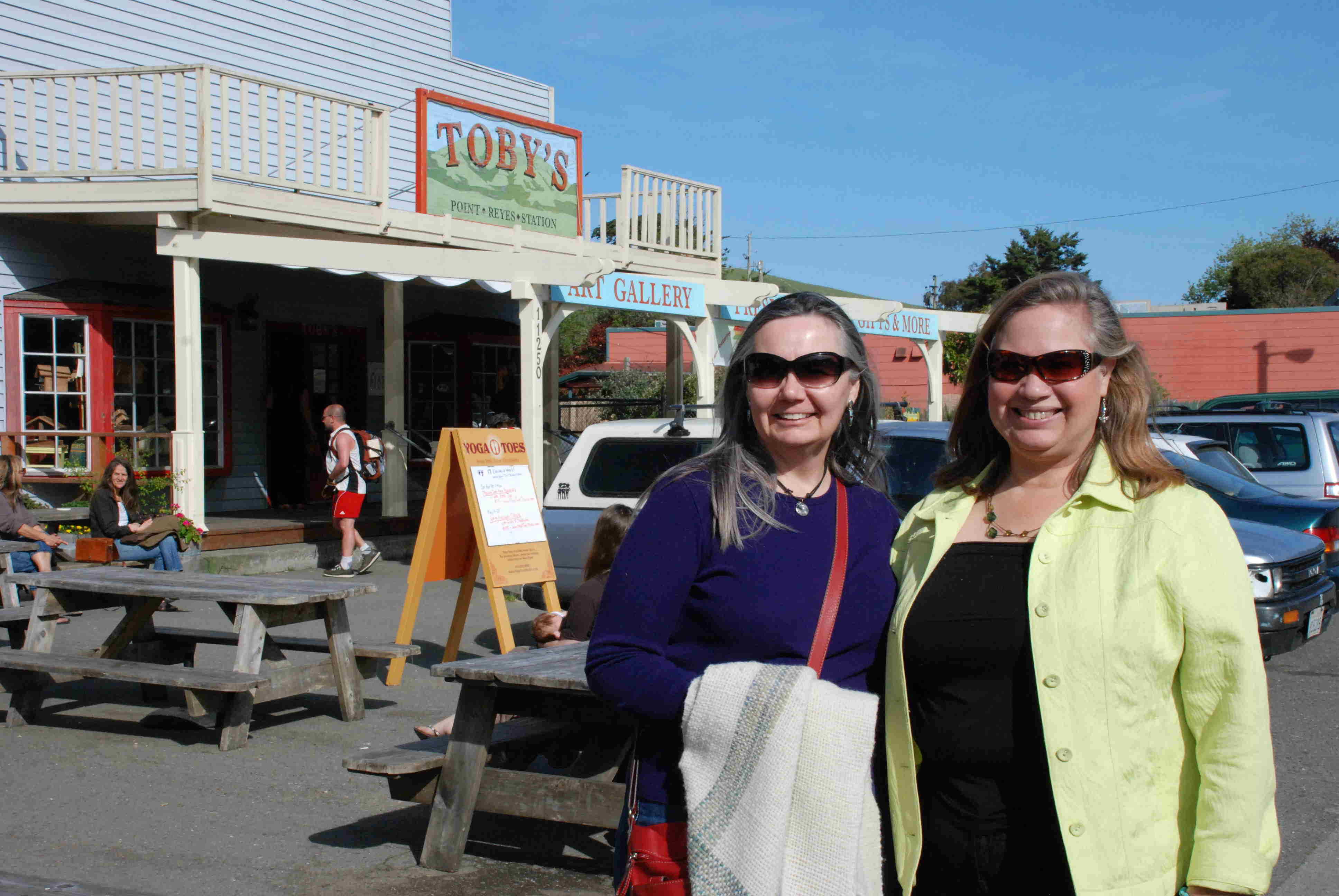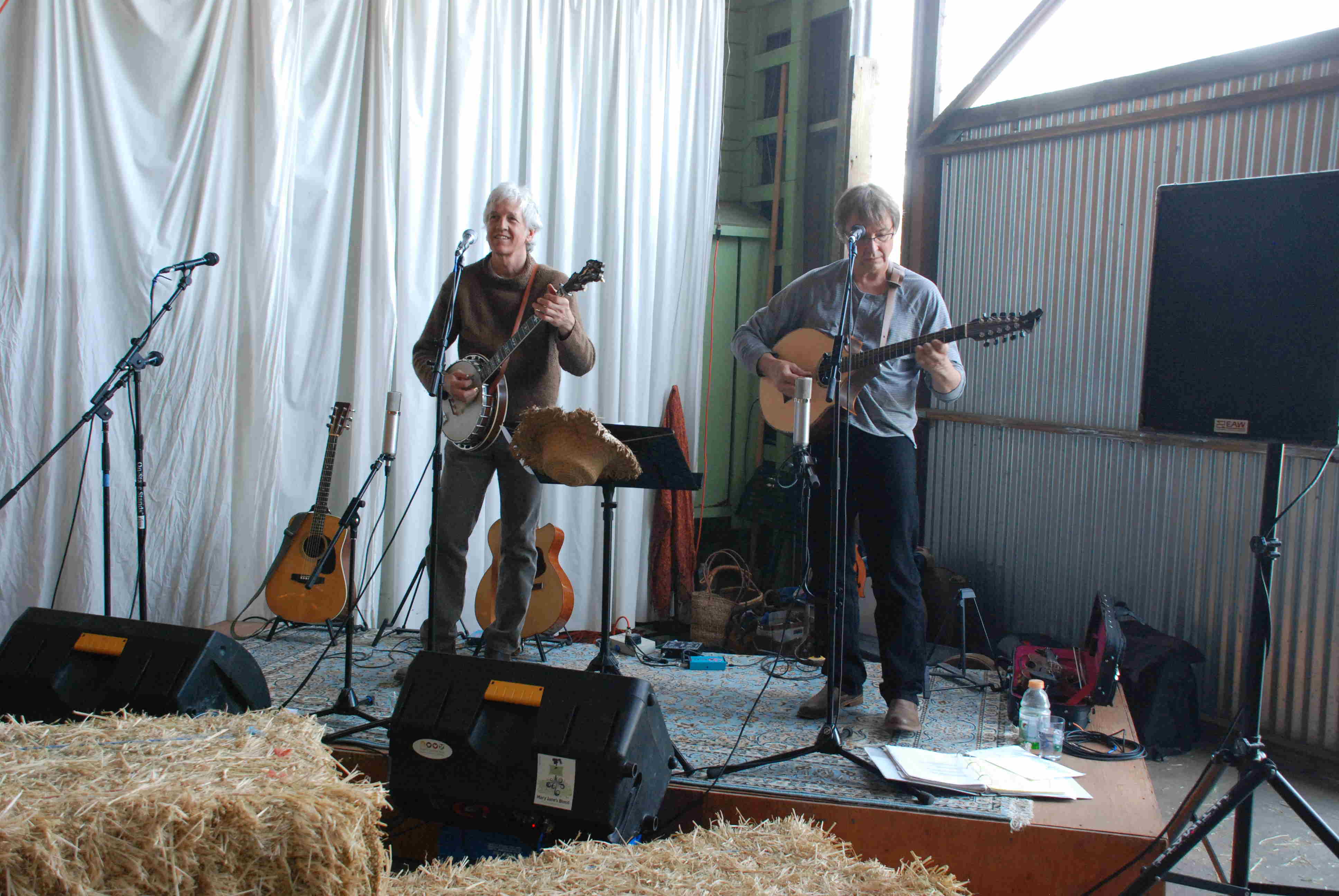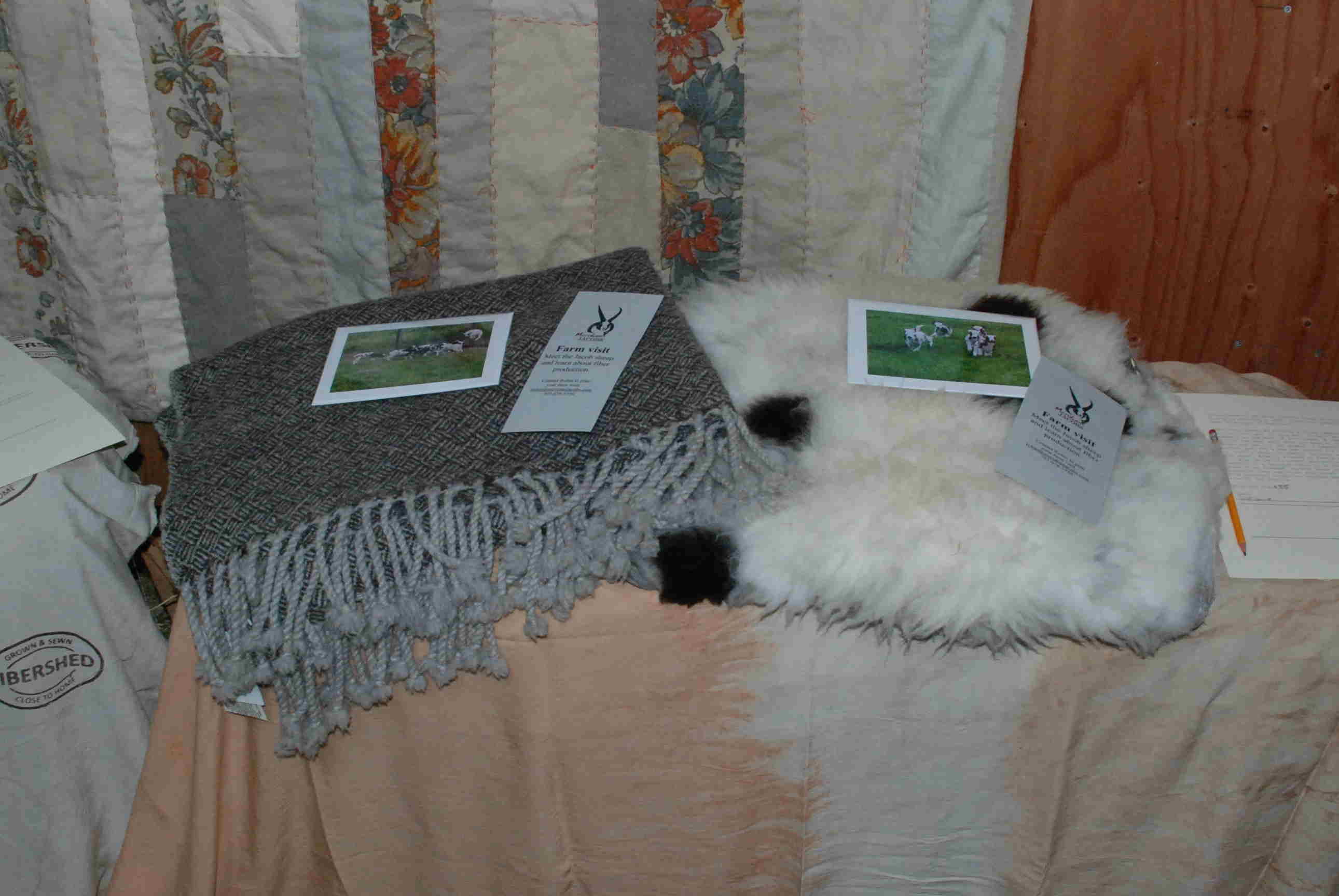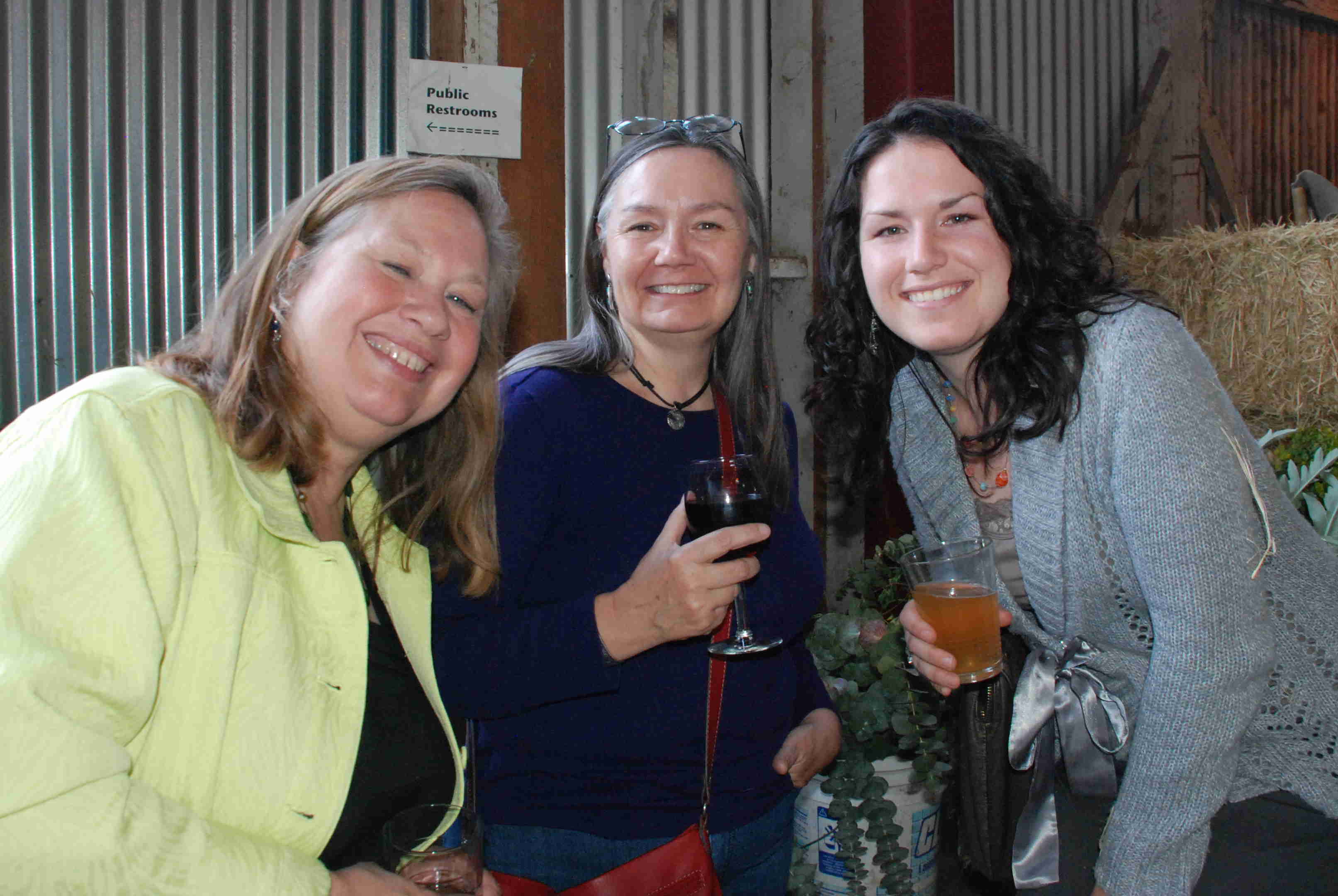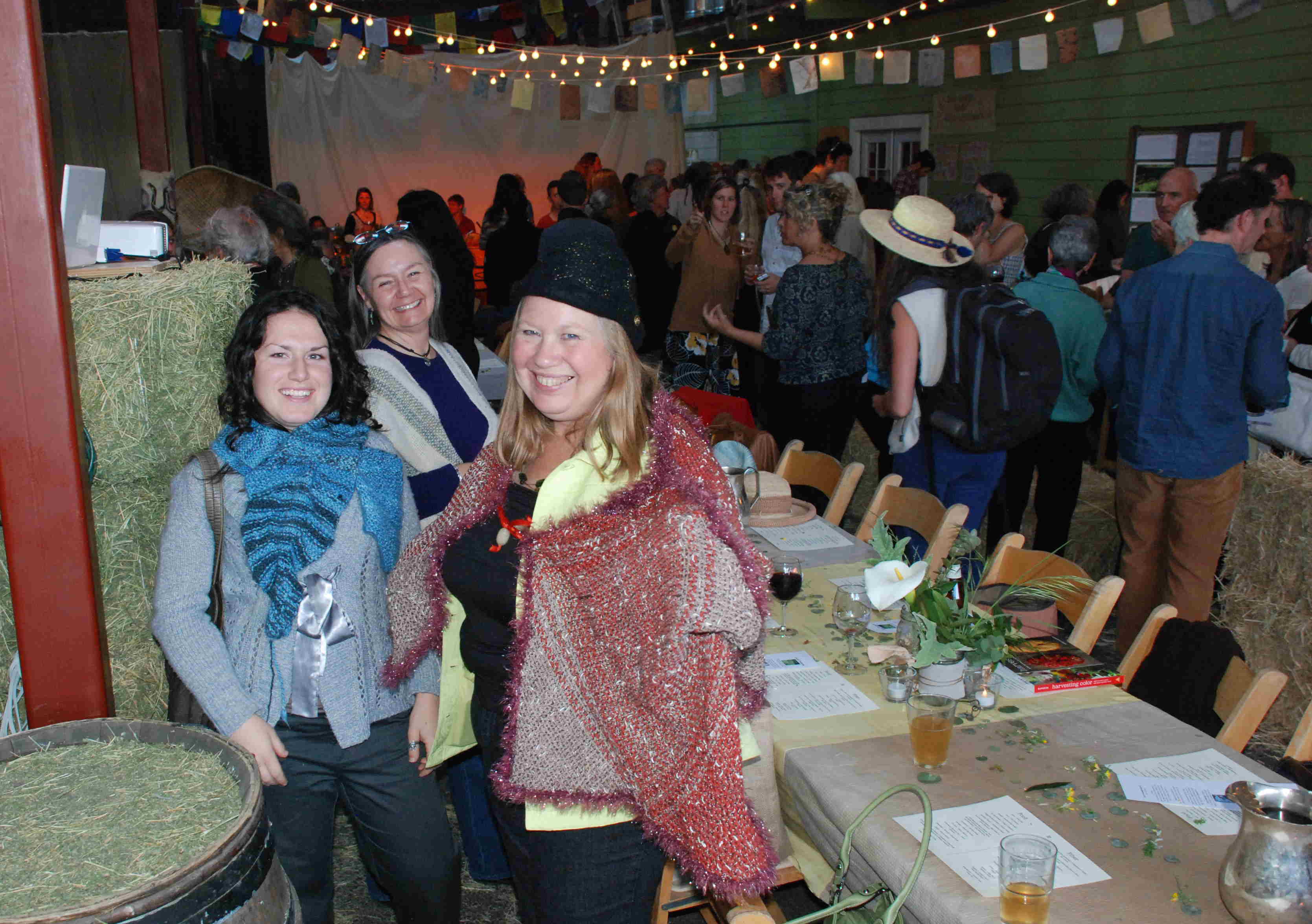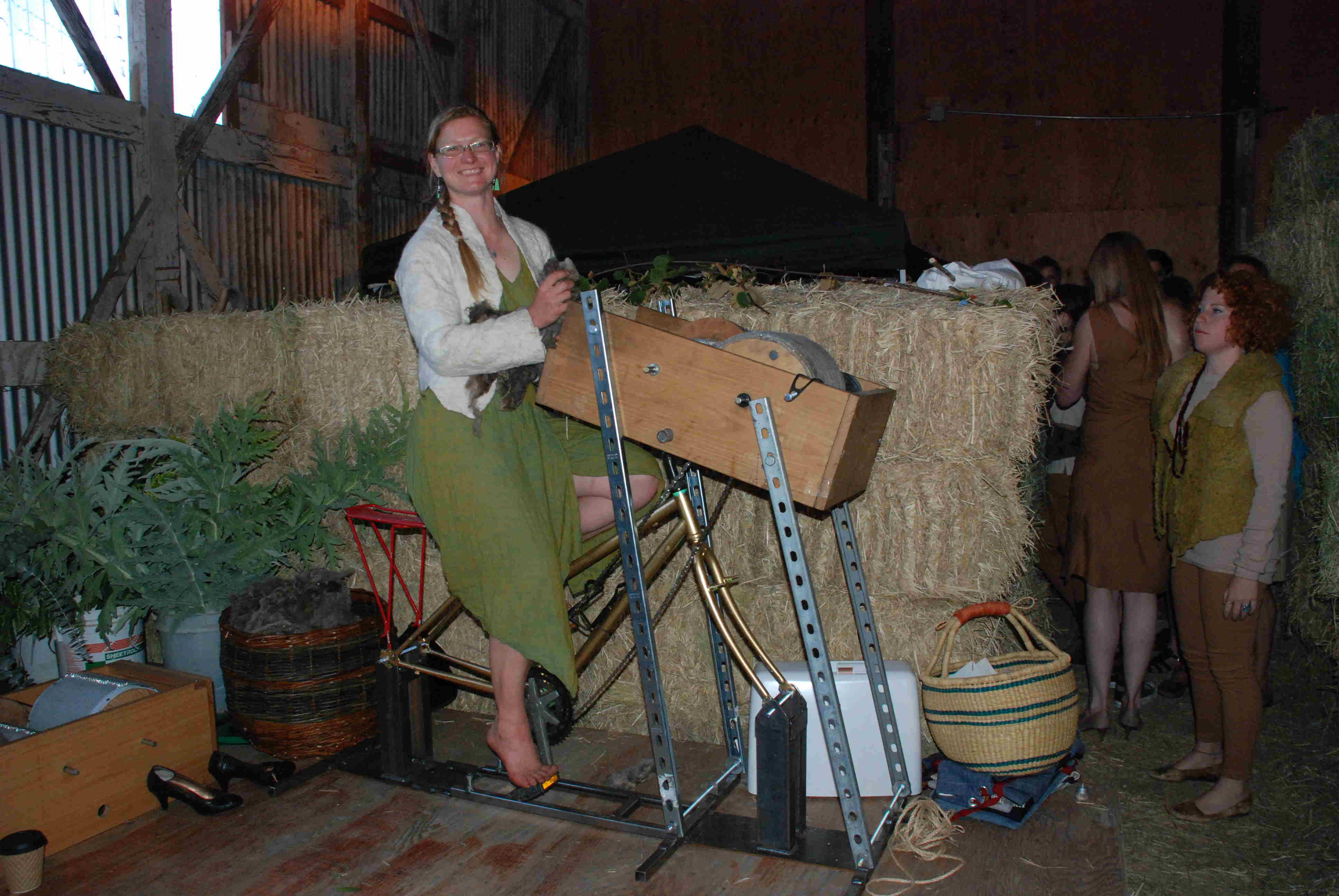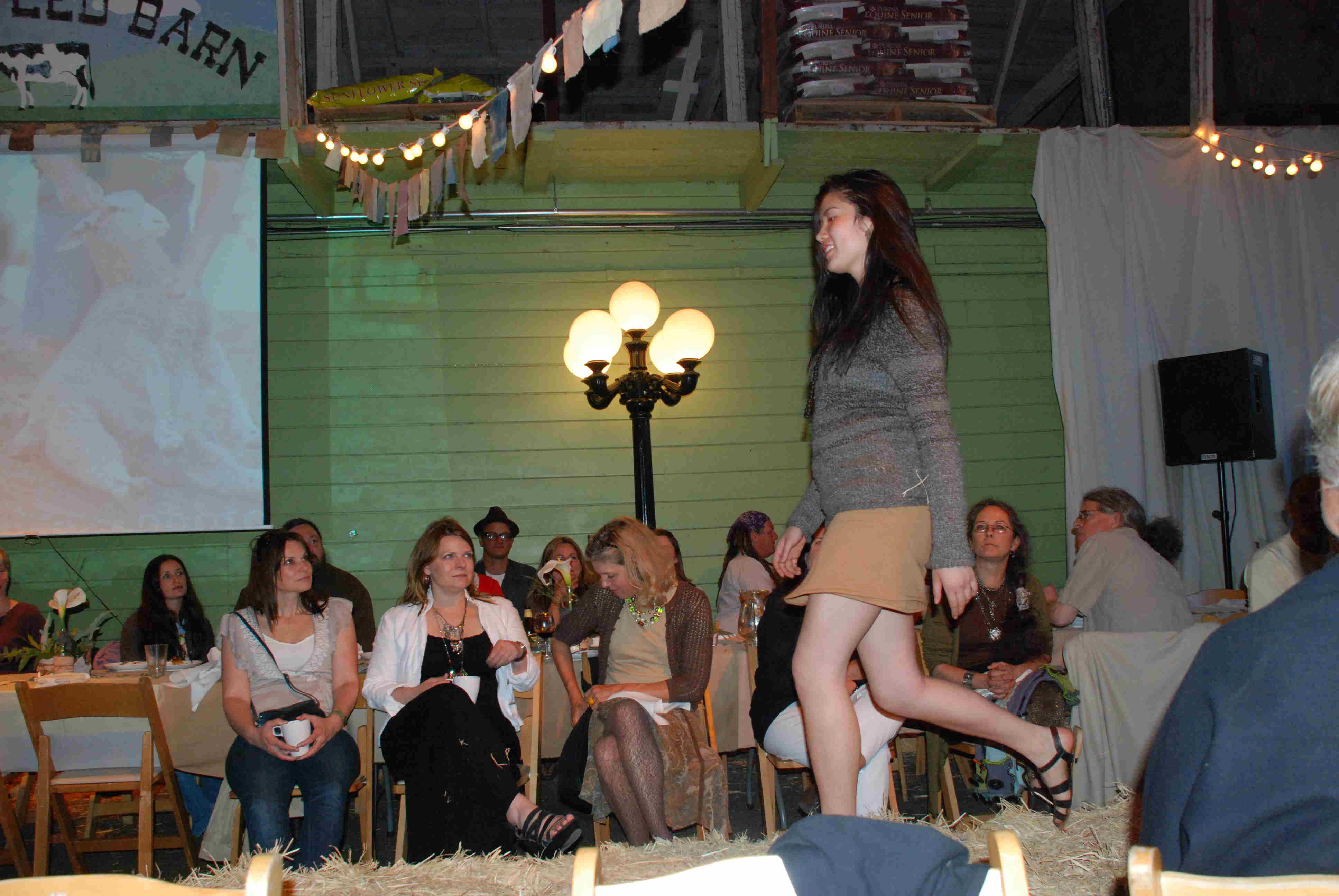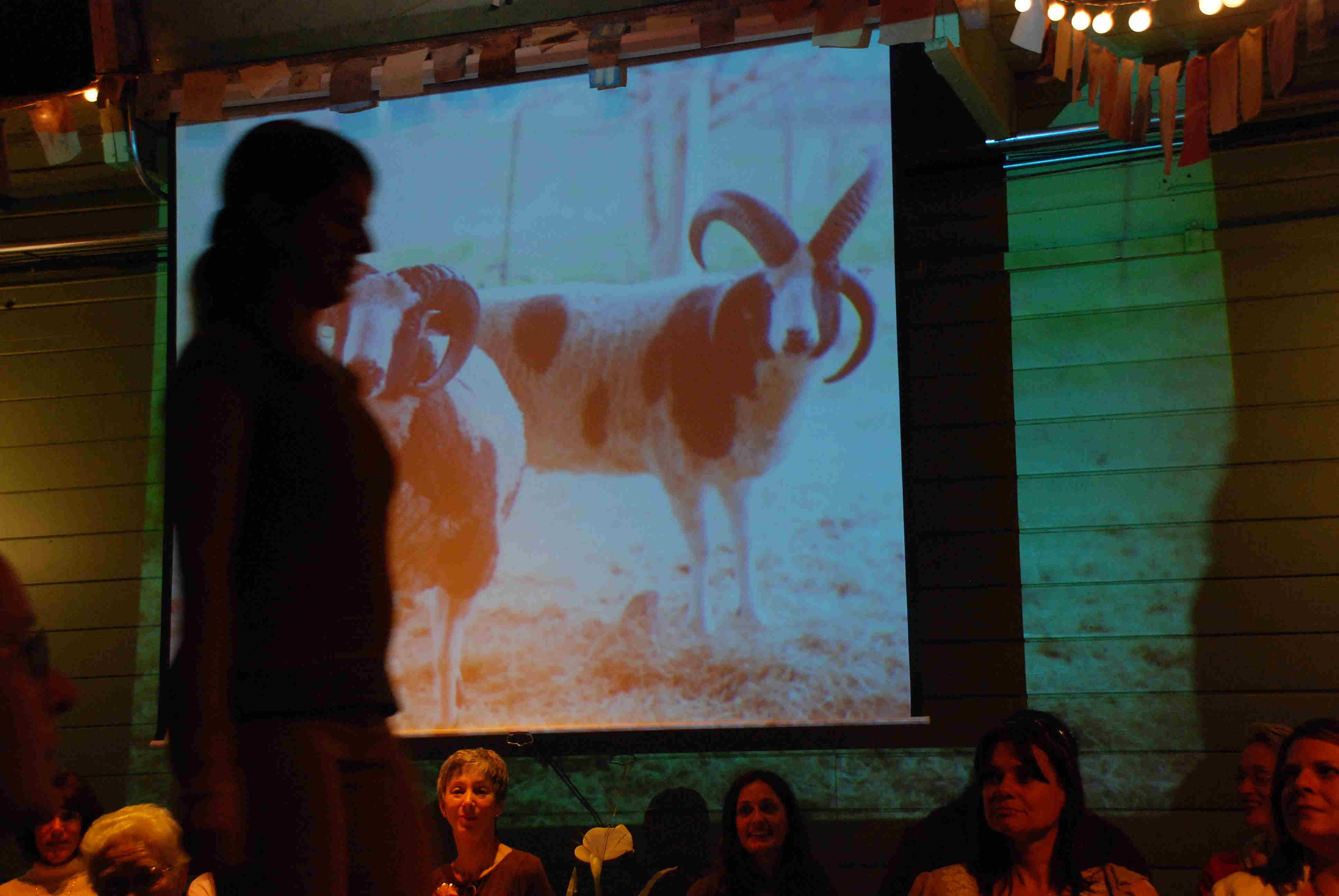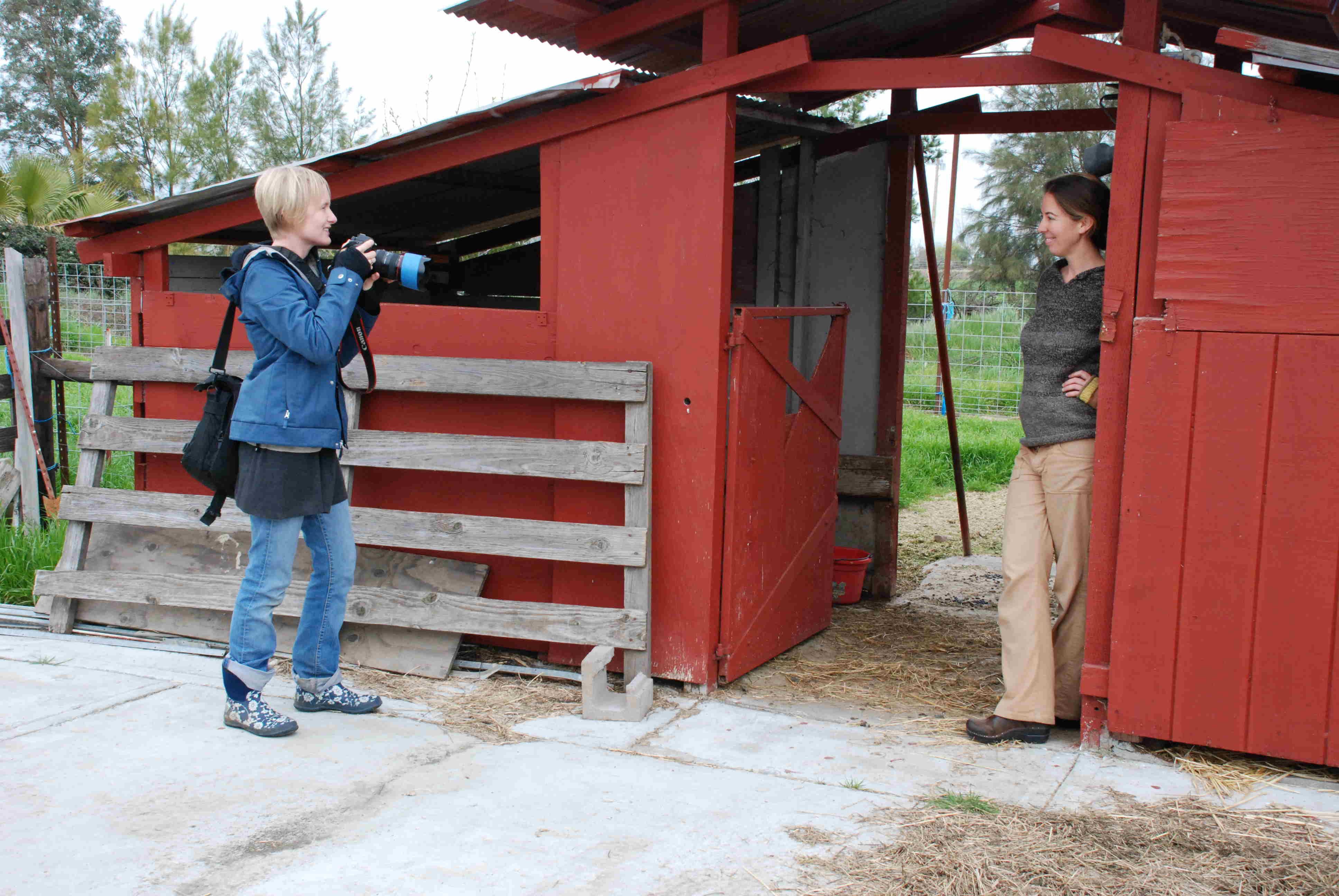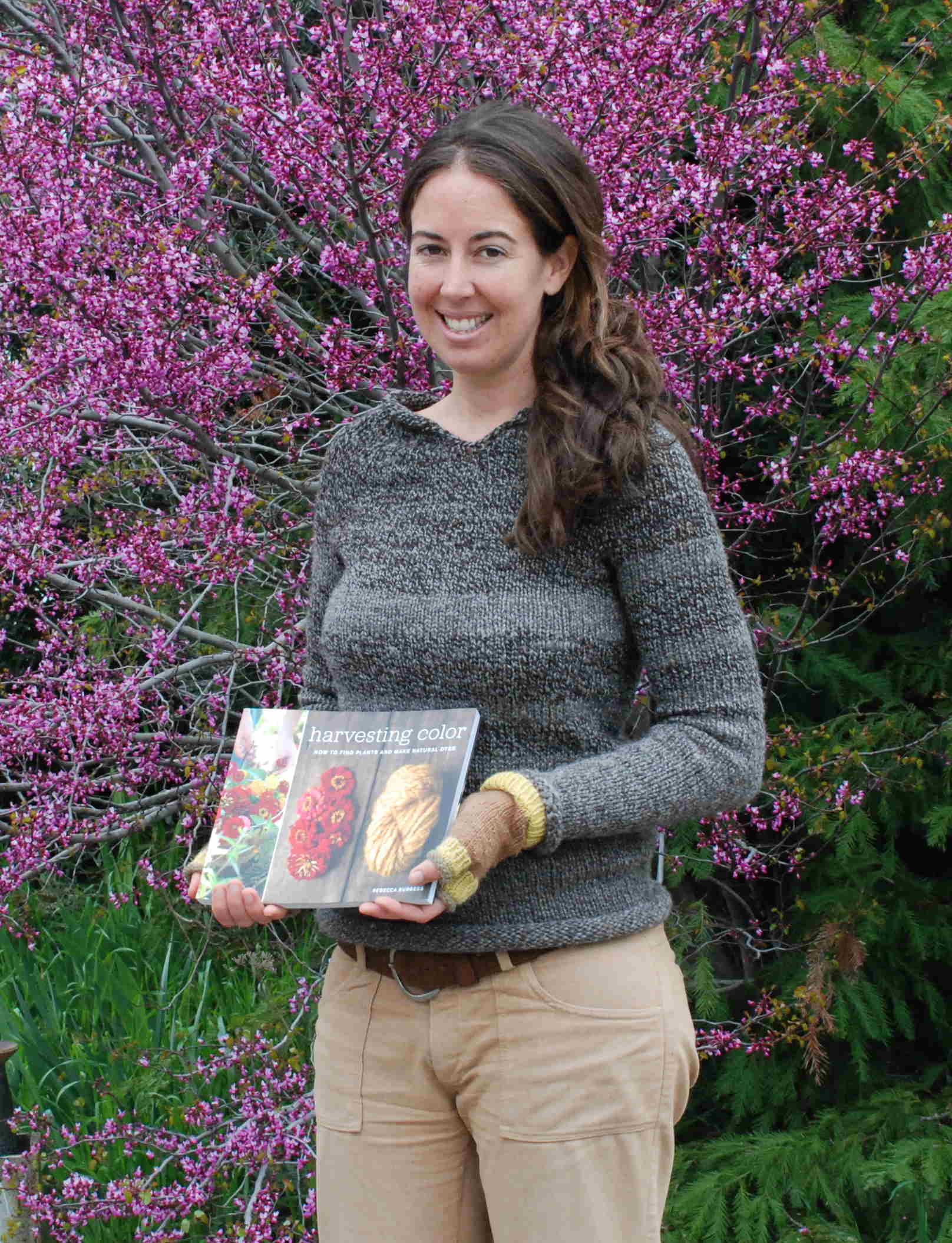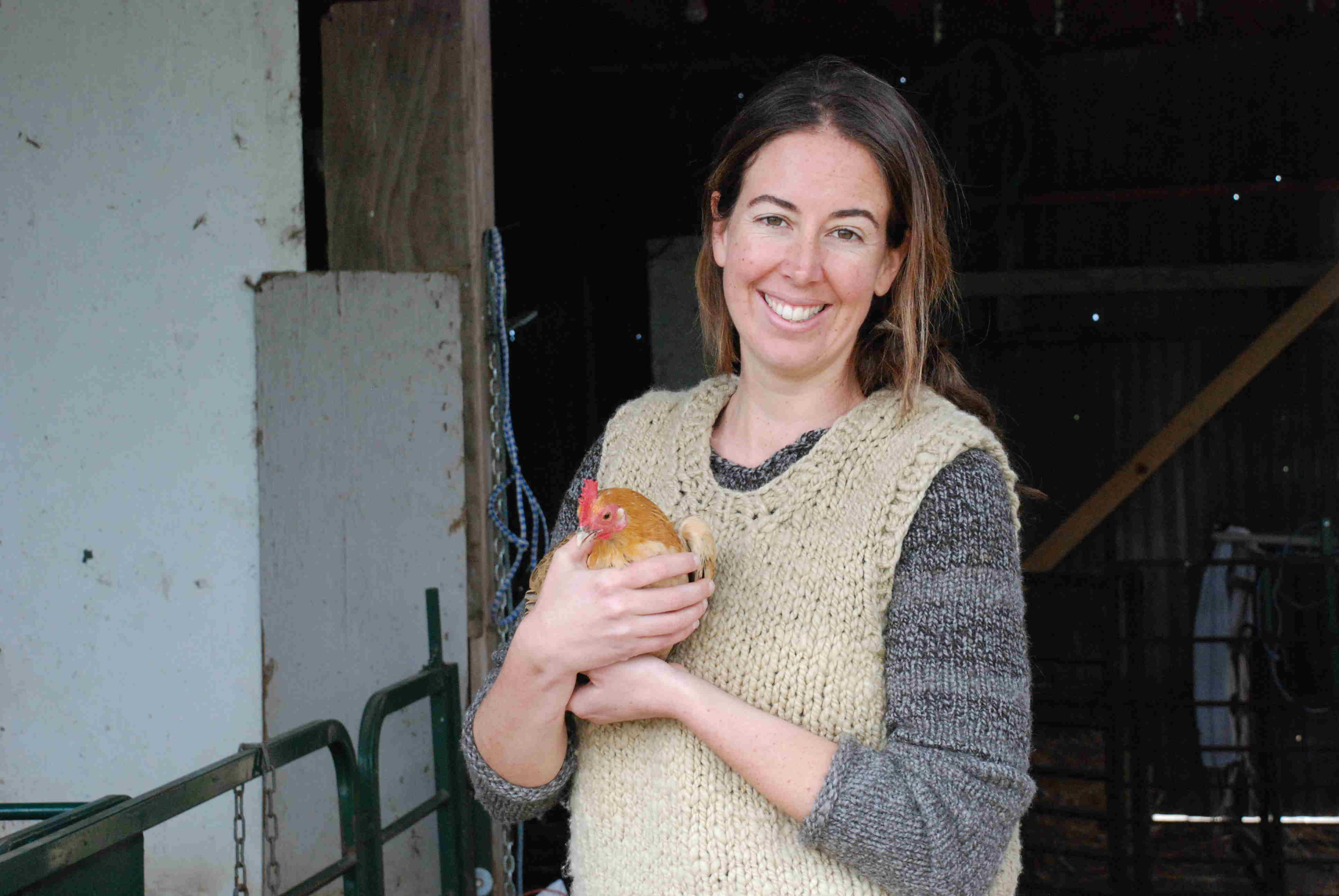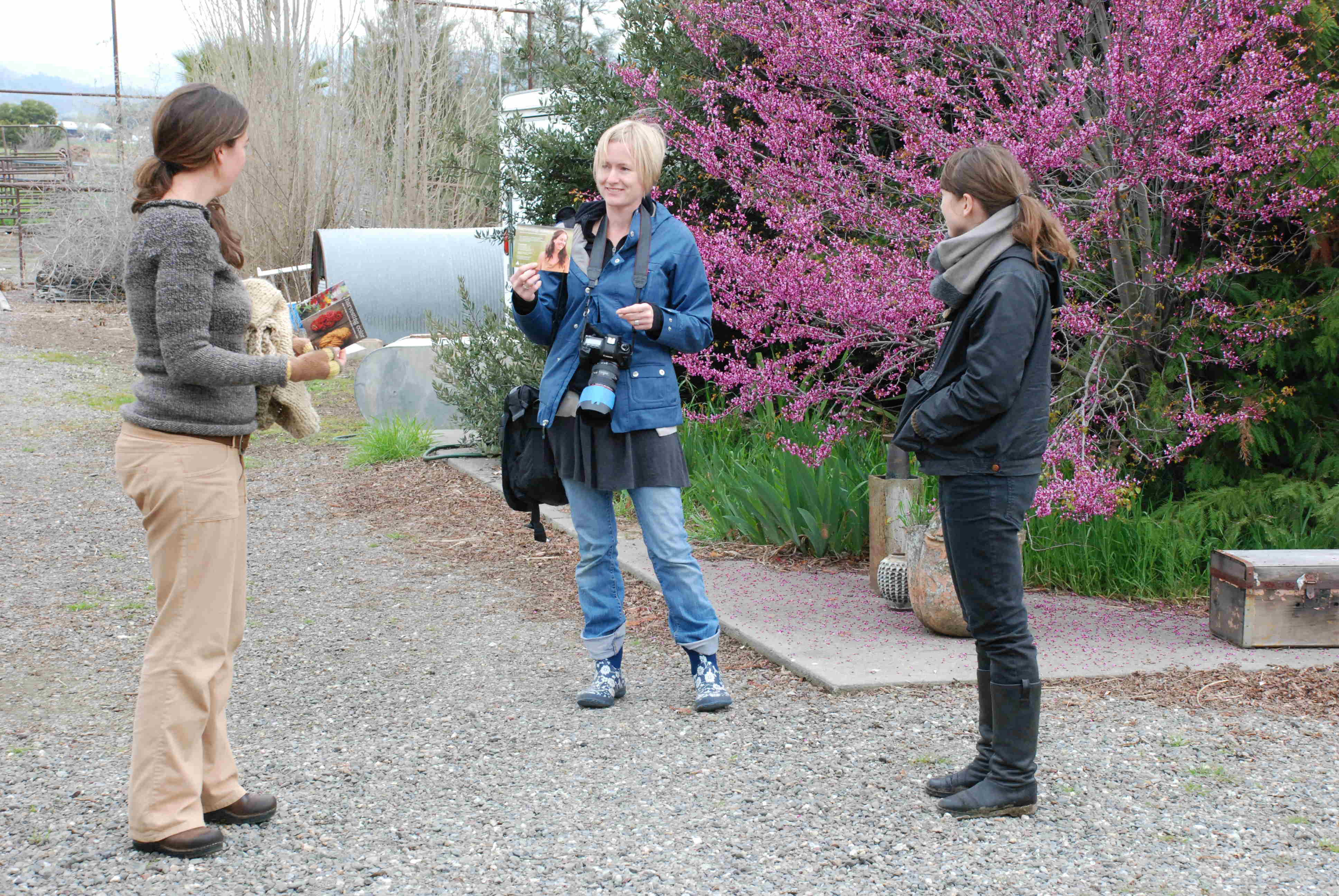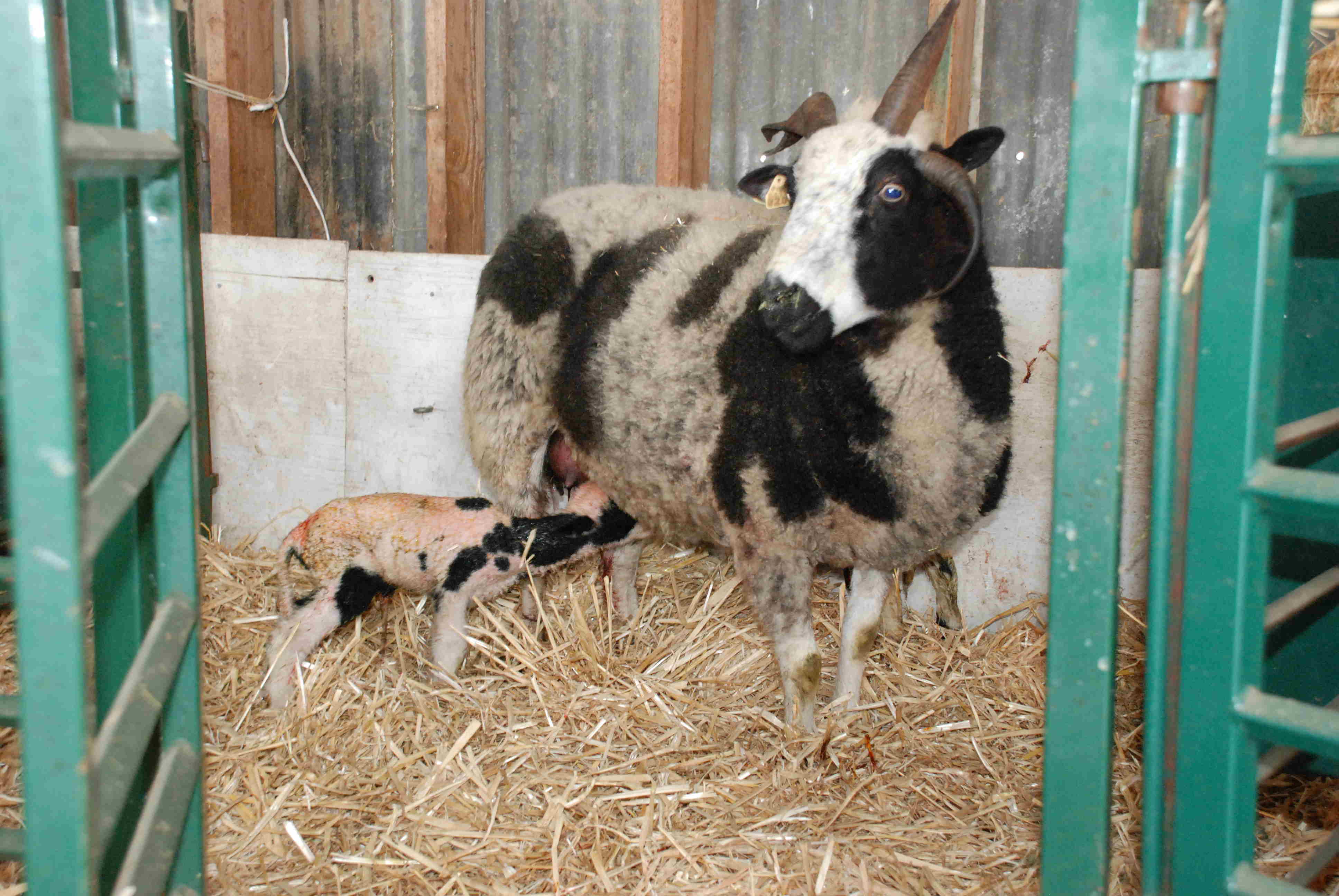So much for my one blog post every day routine. It’s been a week. I think I had a set back last weekend. I often work on the computer in the late evening. Last Friday I went to bed earlier than normal because I had to get up early for the next day’s event. That backfired. I woke up at 3 a.m. and couldn’t go back to sleep.
Charlene (Integrity Alpacas, creator of Gardener’s Gold, and my down-the-road neighbor) and I left at 5 a.m. for San Francisco to be part of the Fibershed booth at the Ferry Building Farmers’ Market.
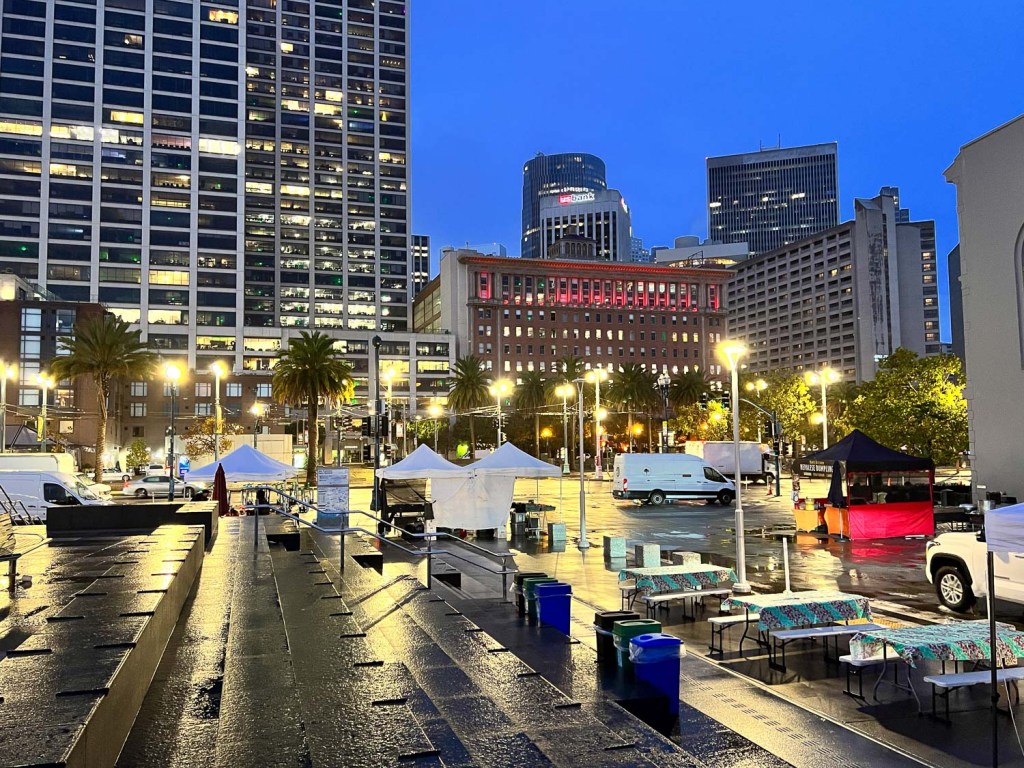
We arrived at dawn and some people were already setting up. It had been raining and continued to rain and drizzle off and on all day.
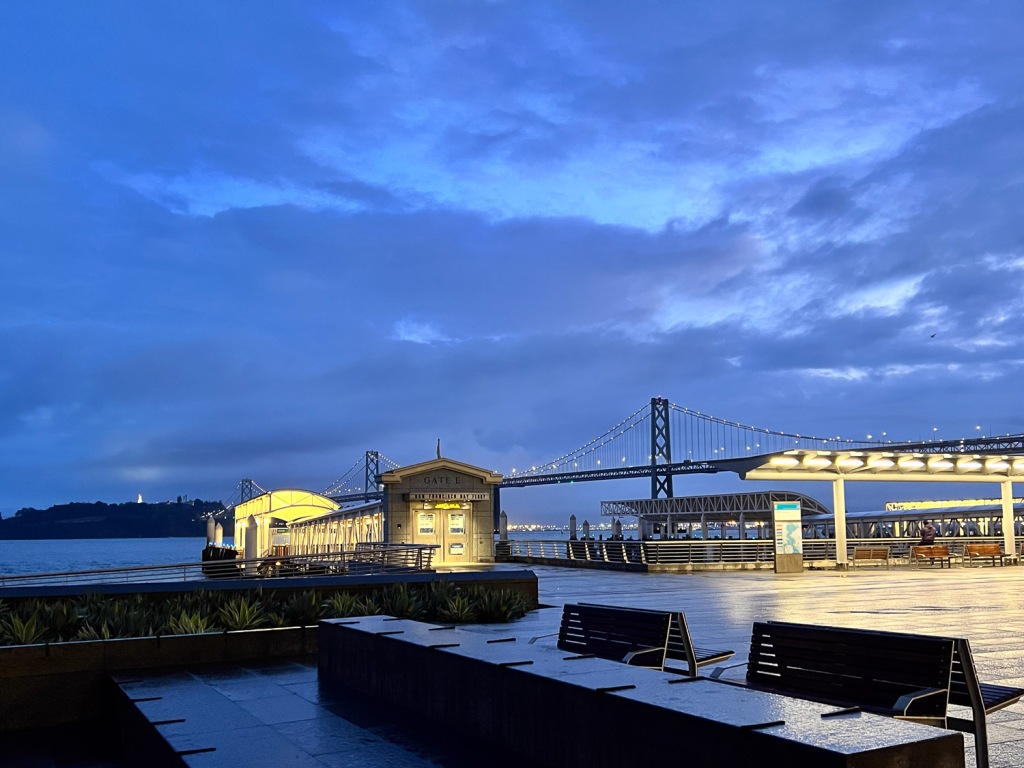
This is the opposite view from our location.
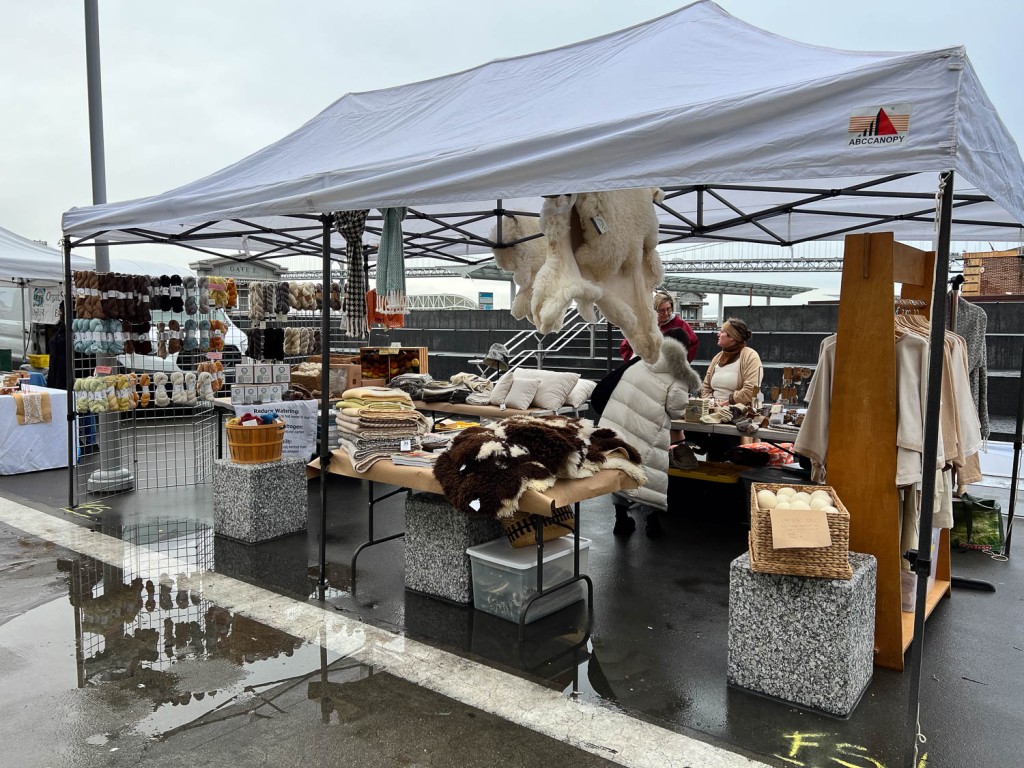
A few Fibershed producers arrived, and we finished setting up in time for the market to open. There were twelve producers represented at the booth.
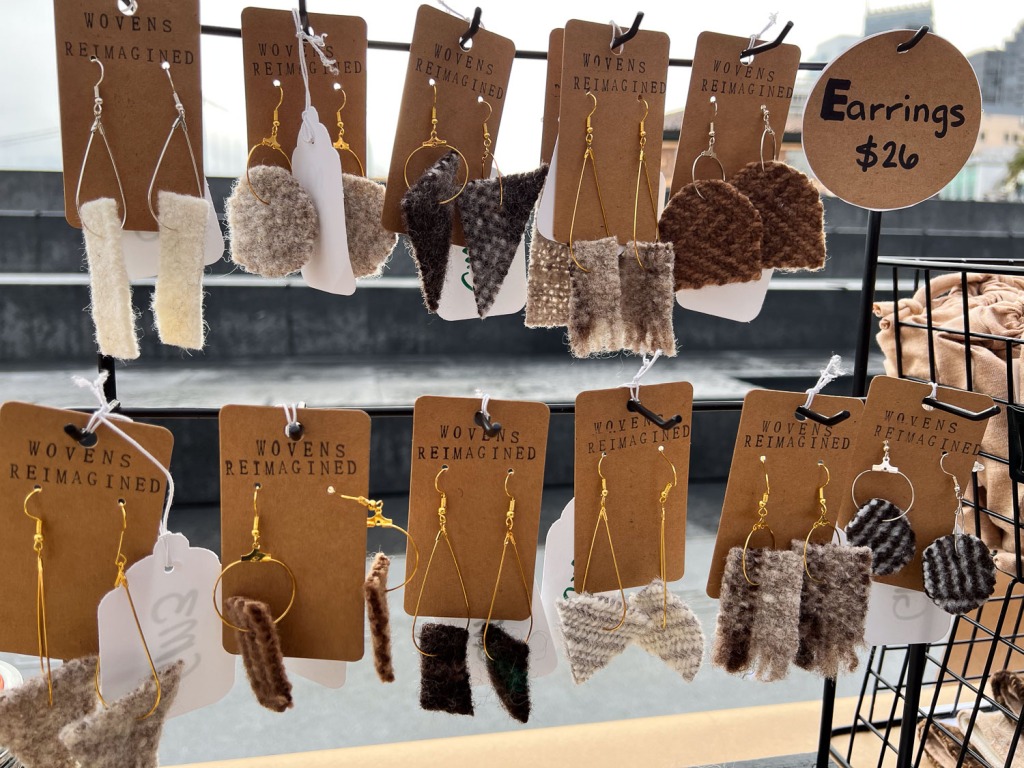
Do you recognize any fabric here? Gynna (creator of Soil to Soil Market is using some of my woven pieces to create earrings! (FYI – Soil to Soil Market is open, there are still only two of us listed while there is more behind-the-scenes work.)
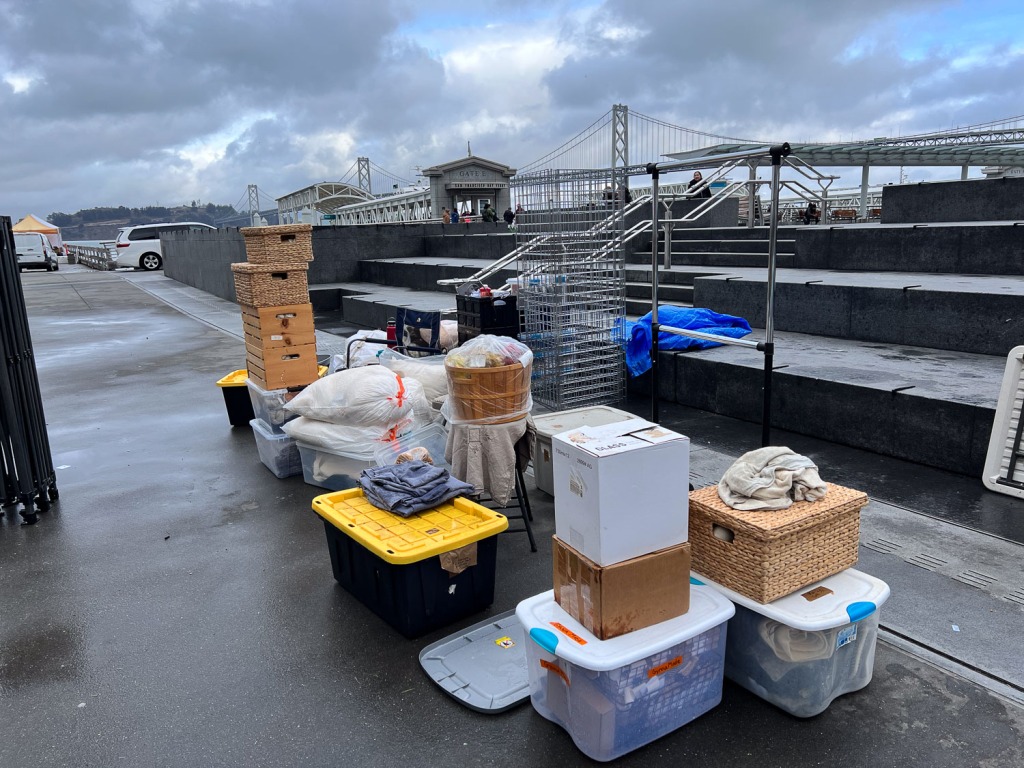
This was a cold, wet day. Thankfully we were able to pack up when the market was over at 2. When Charlene went to the parking garage to get her truck she found it, along with six other vehicles, had been broken into. Her rear passenger side window was shattered and the truck had been searched. The next day after, a night of freezing temperature, the front passenger window had shattered and you could tell where it had been hit first but hadn’t yet broken.
I didn’t feel warm until that night in bed (early). I’m ready to stay home.
Back to farm life.
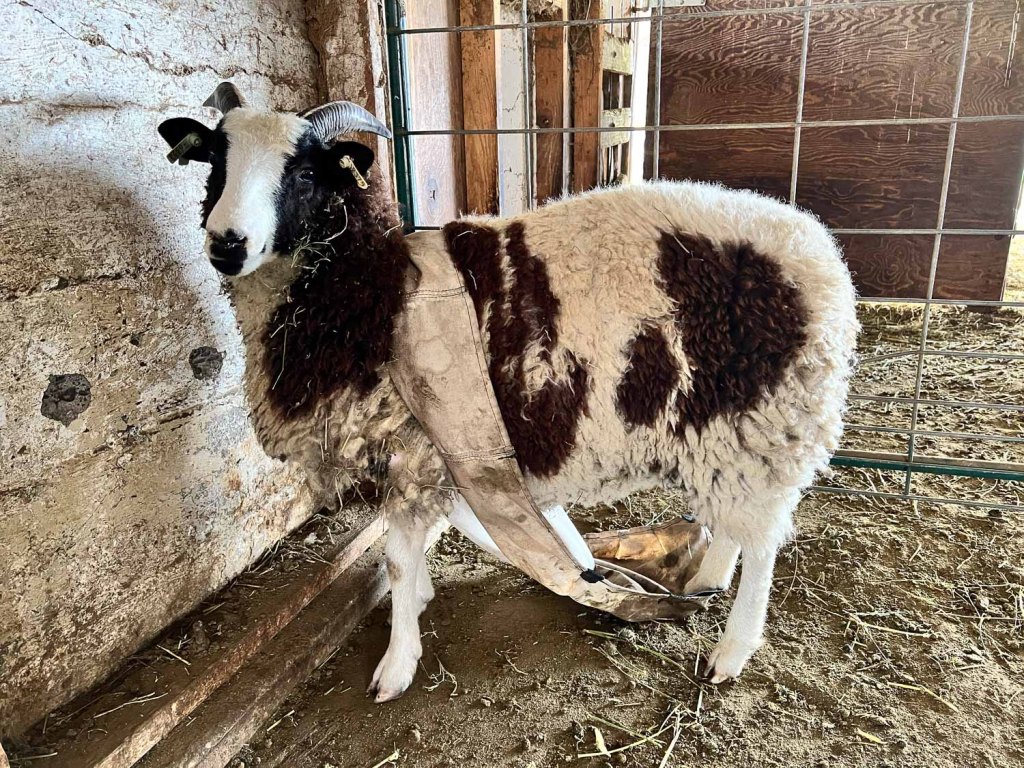
This is SilverSun, one of the March 2023 lambs. I changed coats a couple of weeks ago. Its always a gamble to figure out which coat is big enough to give room for more wool to grow but fits well enough to stay in place. I had bought some new coats last summer and I they fit a little differently. She had probably got a back leg out of the strap and then the front was loose enough to get a front leg through. Eventually the neck opening was around her middle and she was trapped with the coat dragging underneath. The other sheep were harassing her and she couldn’t do anything about it.
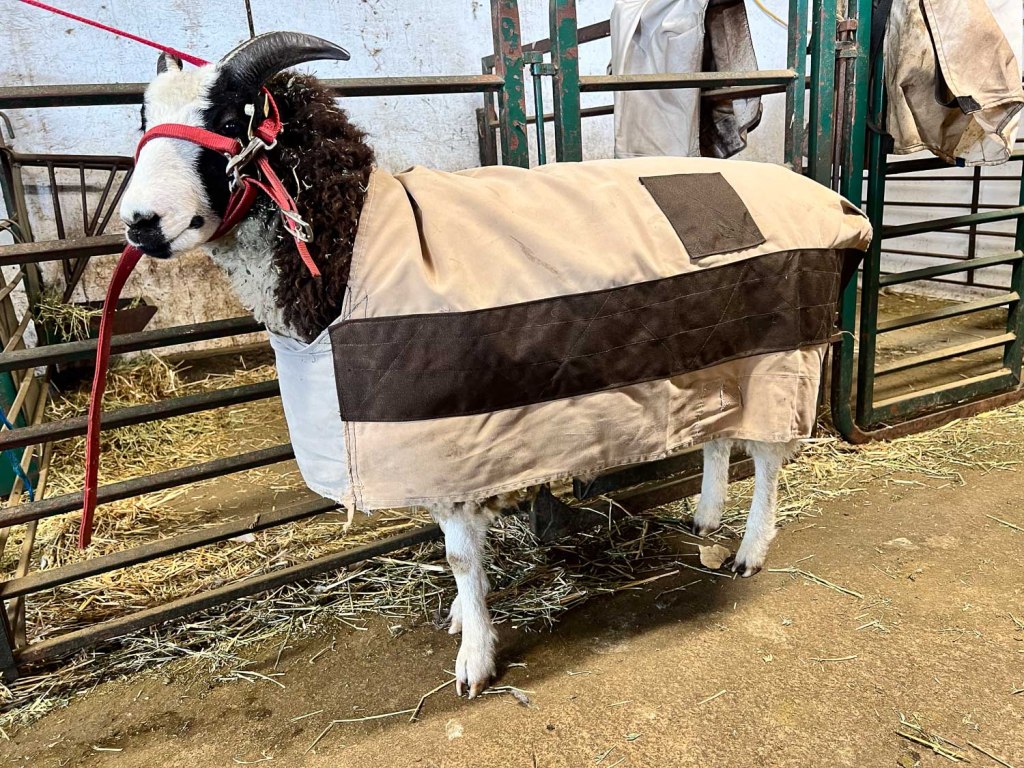
Here she is in one of the old style coats that has been patched. That’s a better fit.
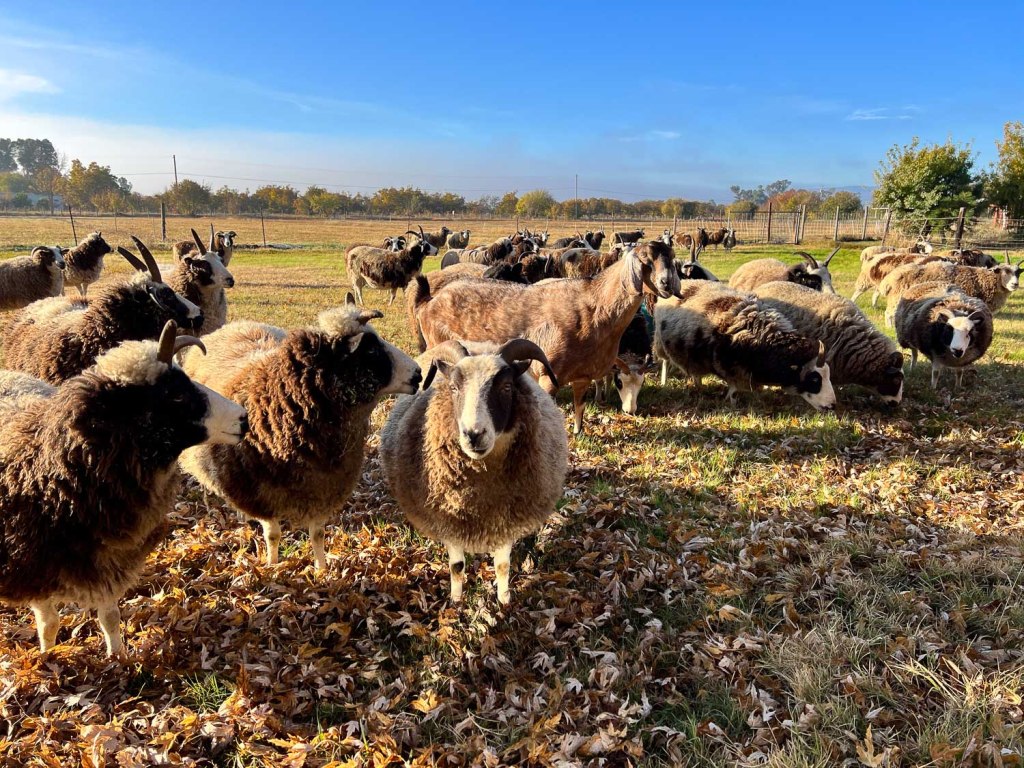
Ewes (and a goat) in the small field behind the shop.
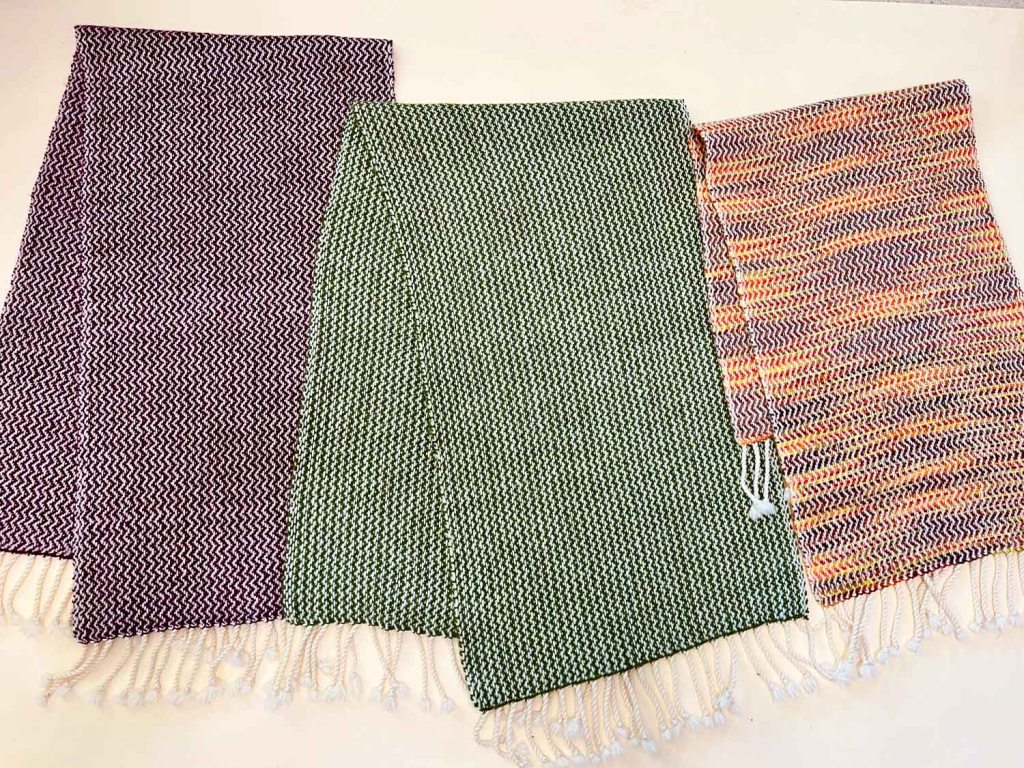
I’ve been focused on weaving…all the weaving that I wish I had done earlier in the year to be ready for the holidays. These are three wool shawls now at The Artery in Davis.
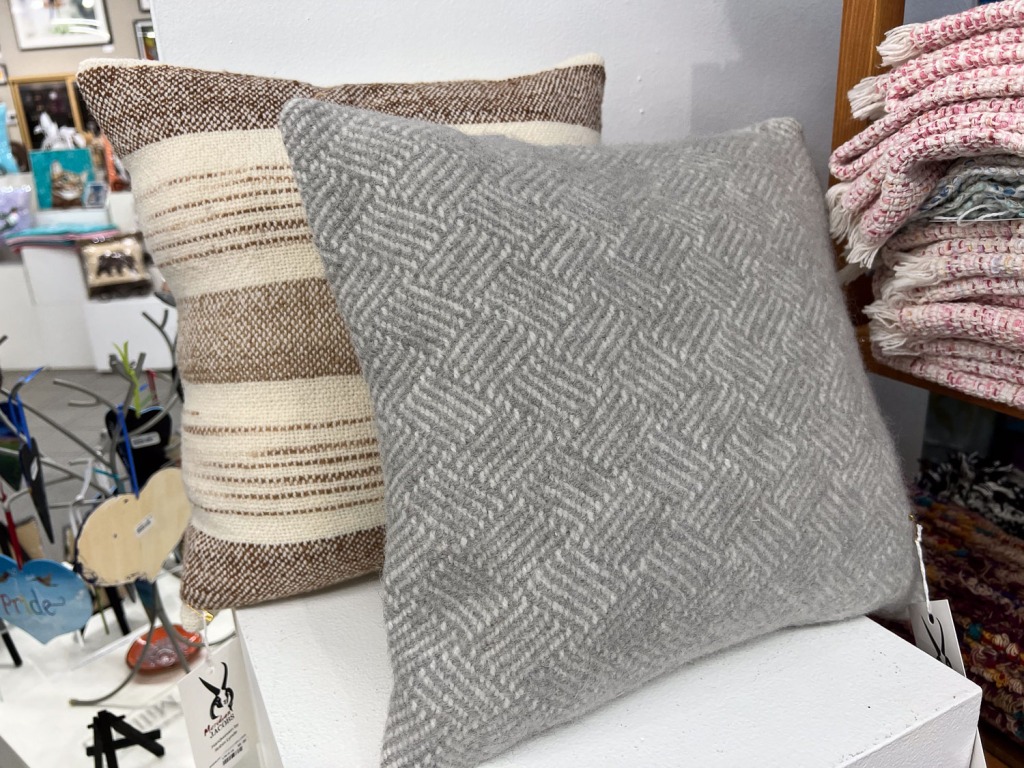
I’m also creating other pieces using odd bits of handwoven fabric. These pillows are at The Artery.
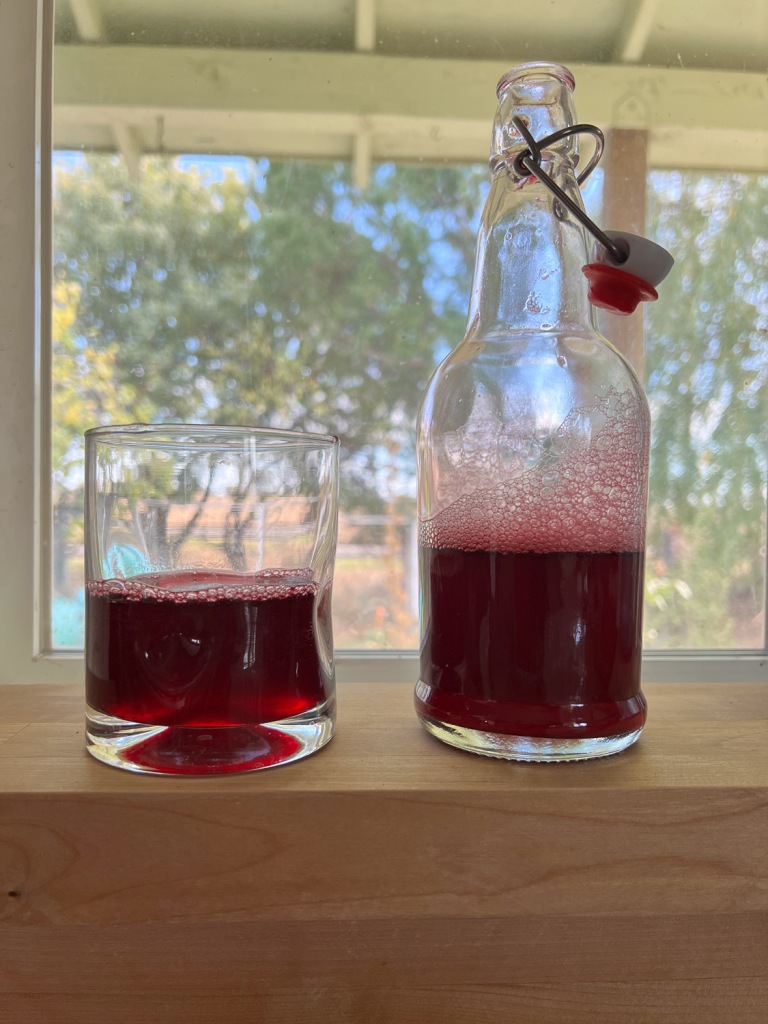
At Spinners Day Out on Friday a friend who had harvested our pomegranates brought me a treat of pomegranate soda!
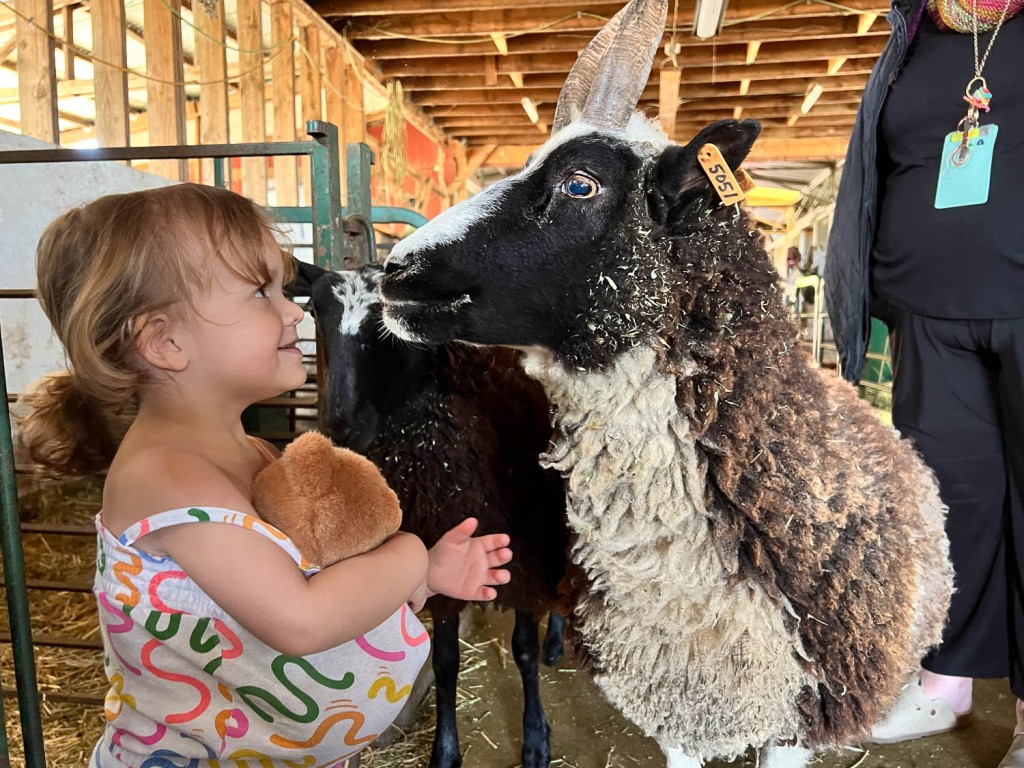
Also at Spinners Day Out, our youngest friend, daughter of one of the original Farm Club members, went to the barn to visit with Jade. (That’s a stuffed kitty snuggled in her clothes.)
Back to normal work–weaving, website, sheep, etc.


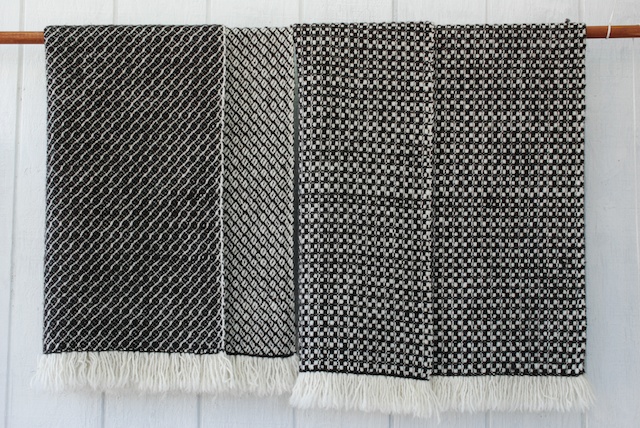
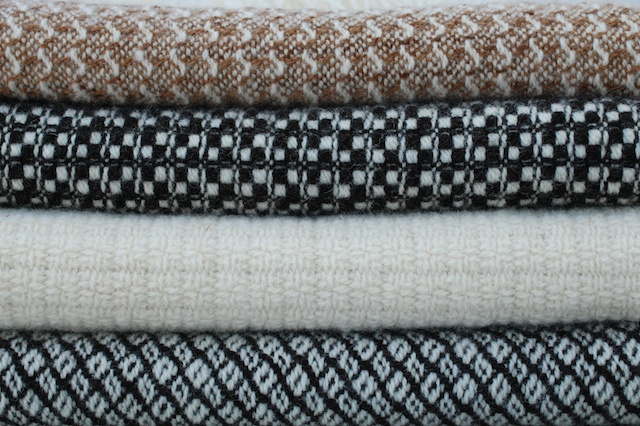
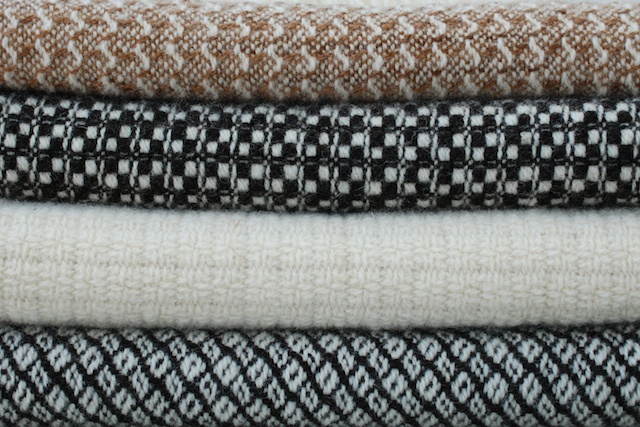
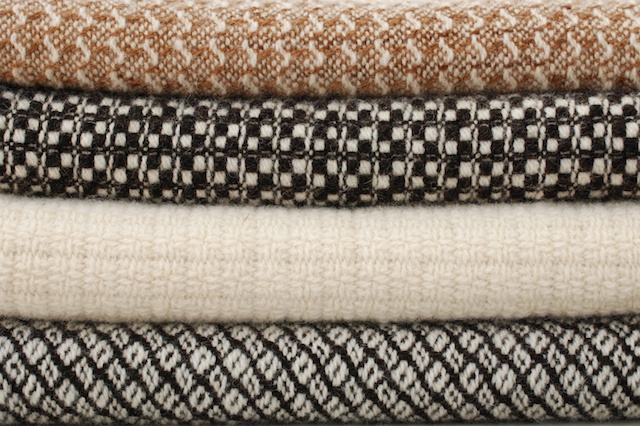
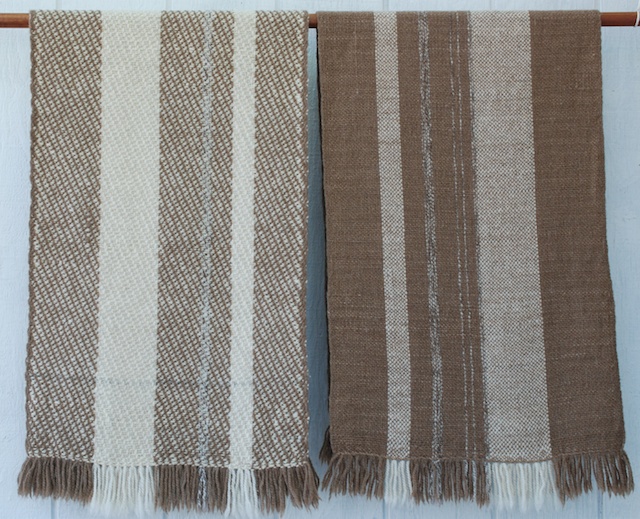
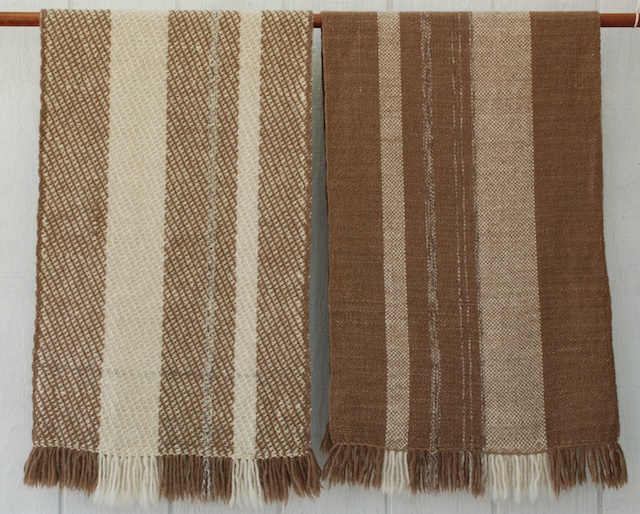
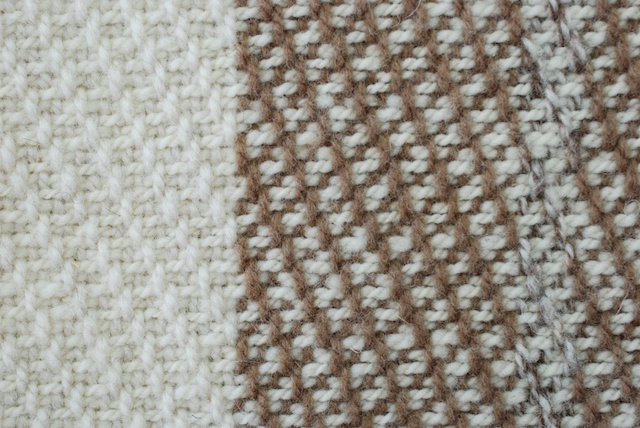

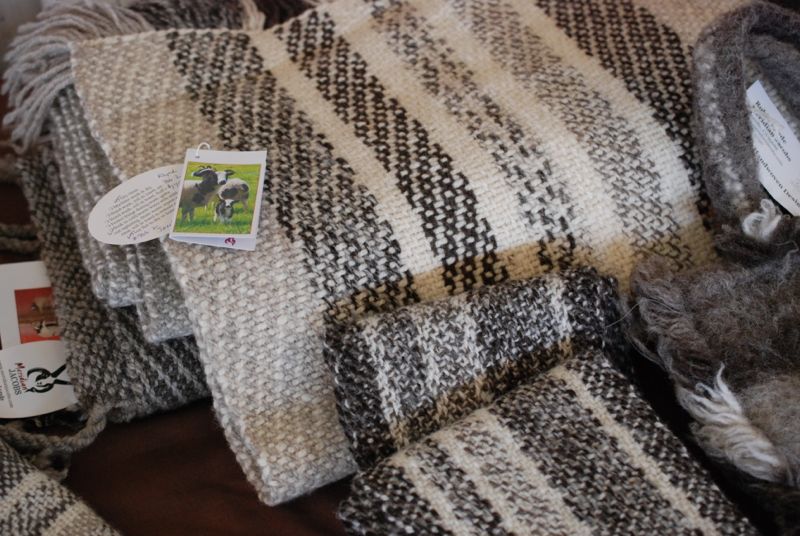

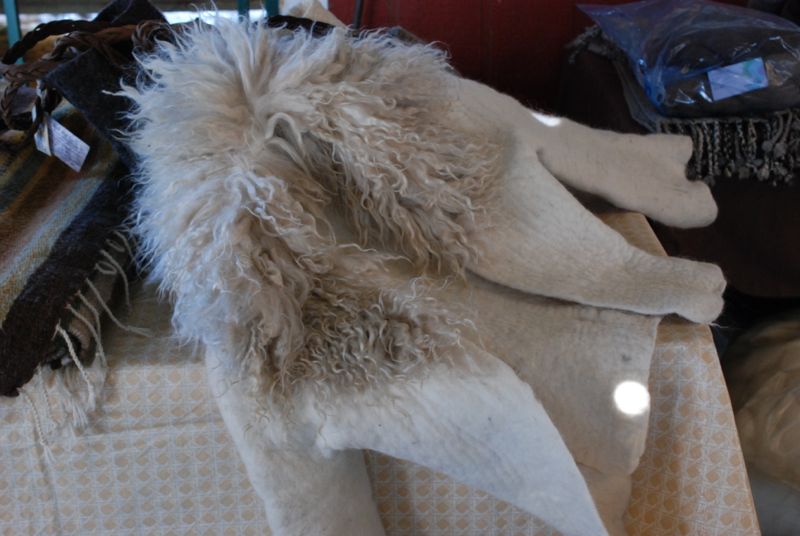
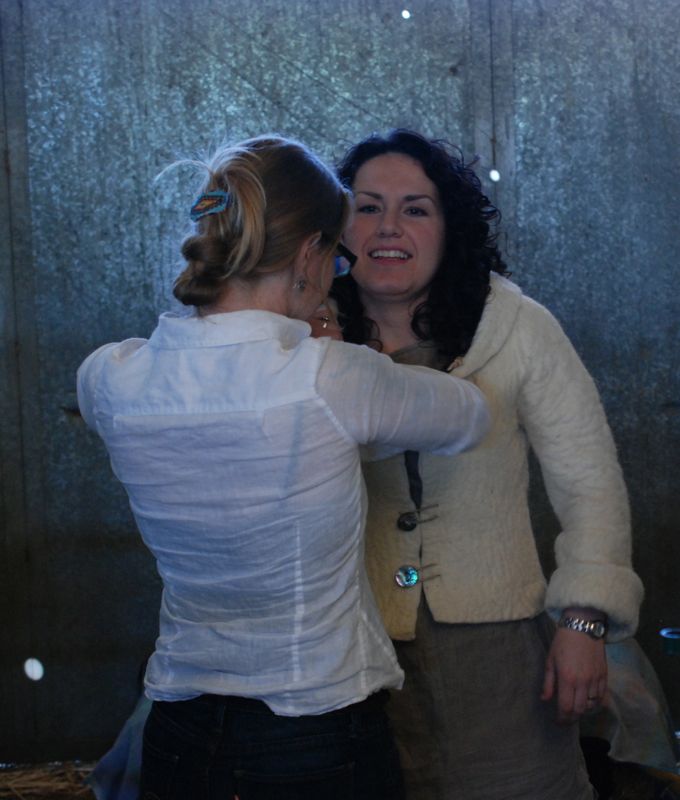
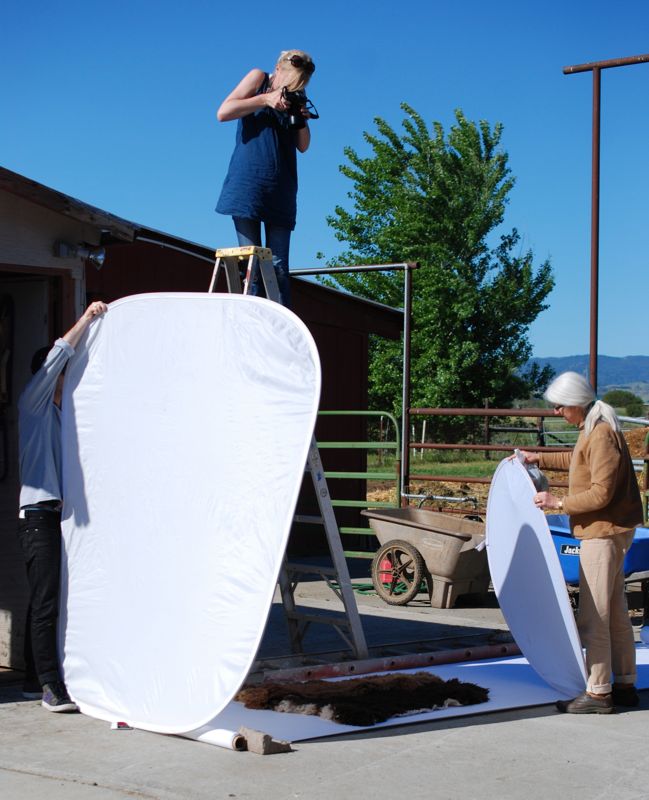
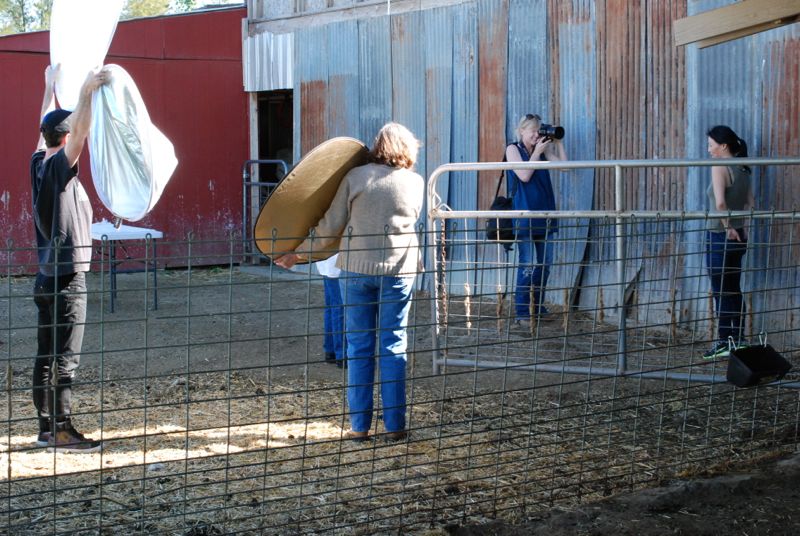
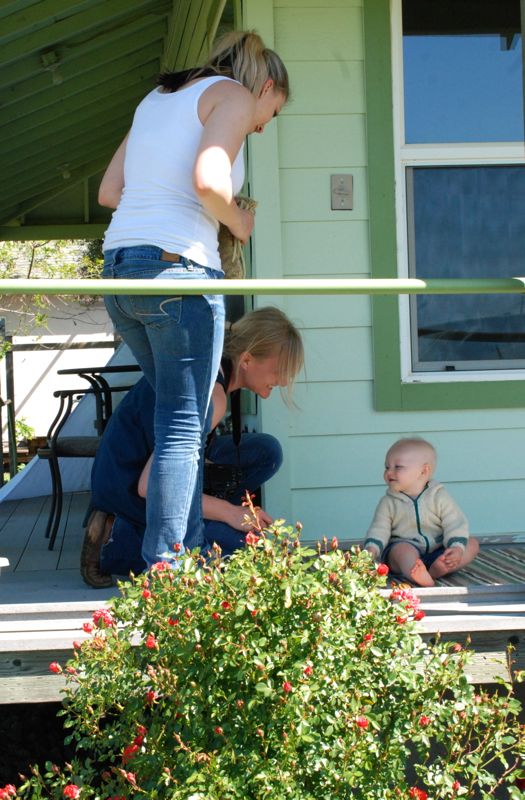
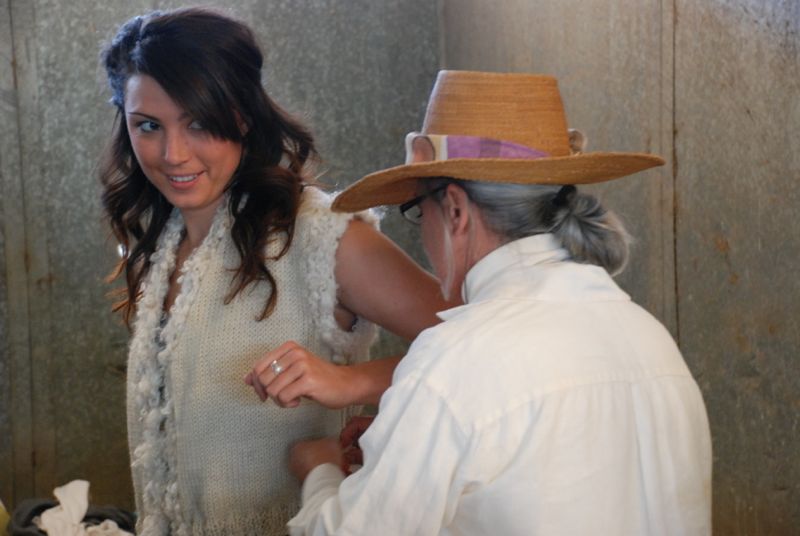
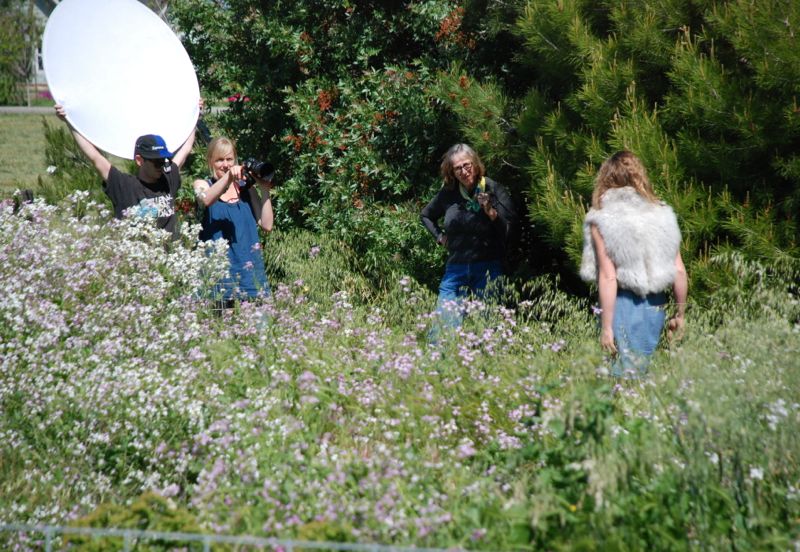
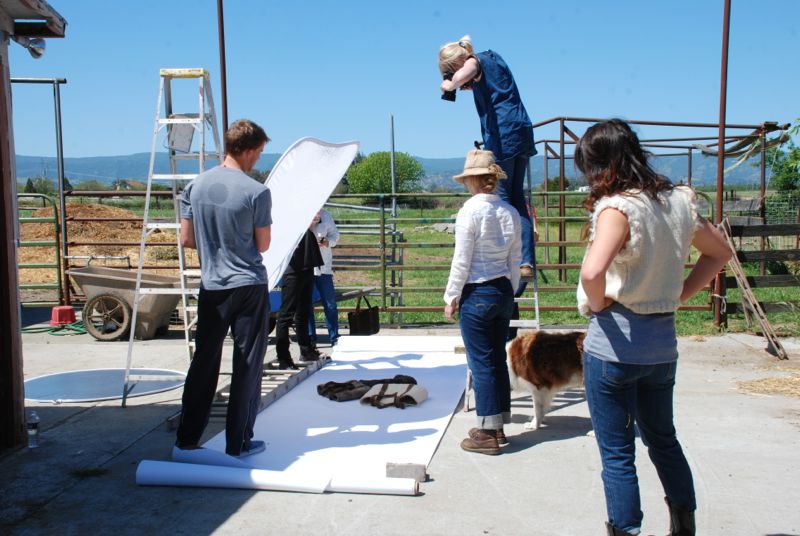
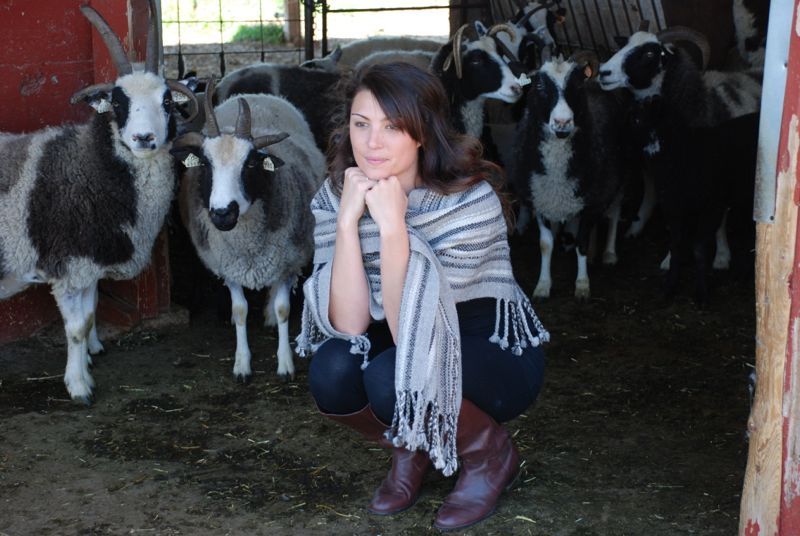
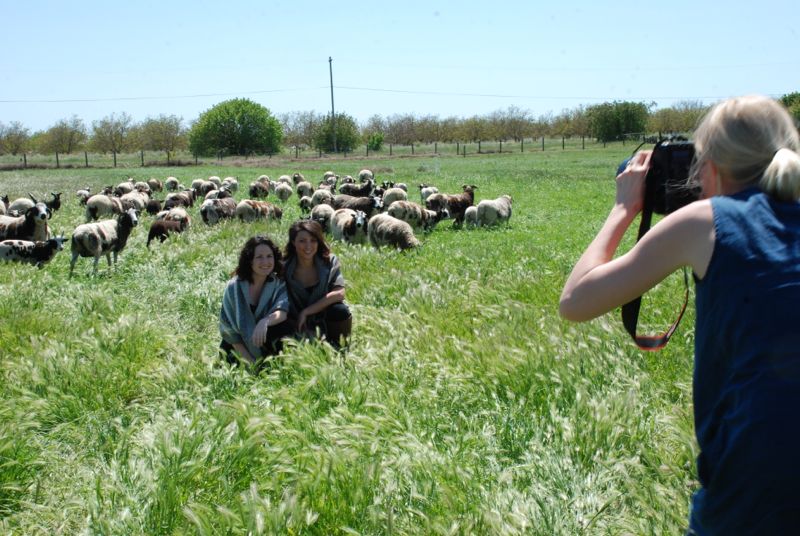
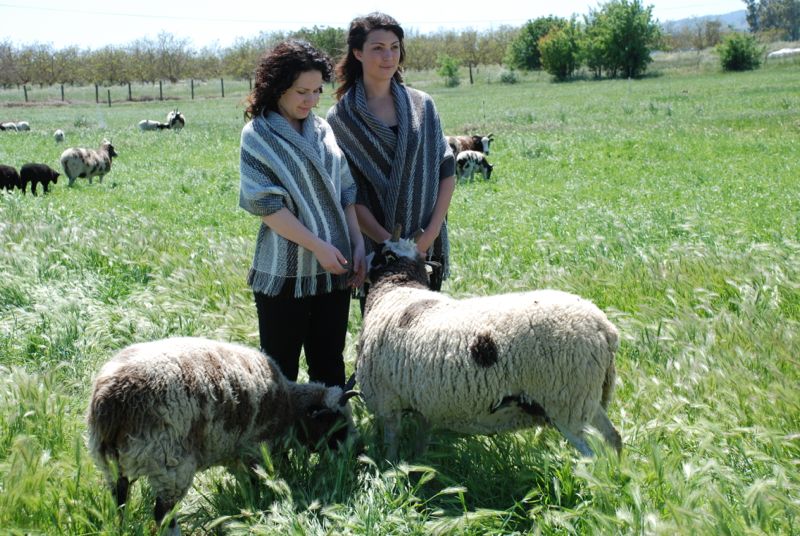
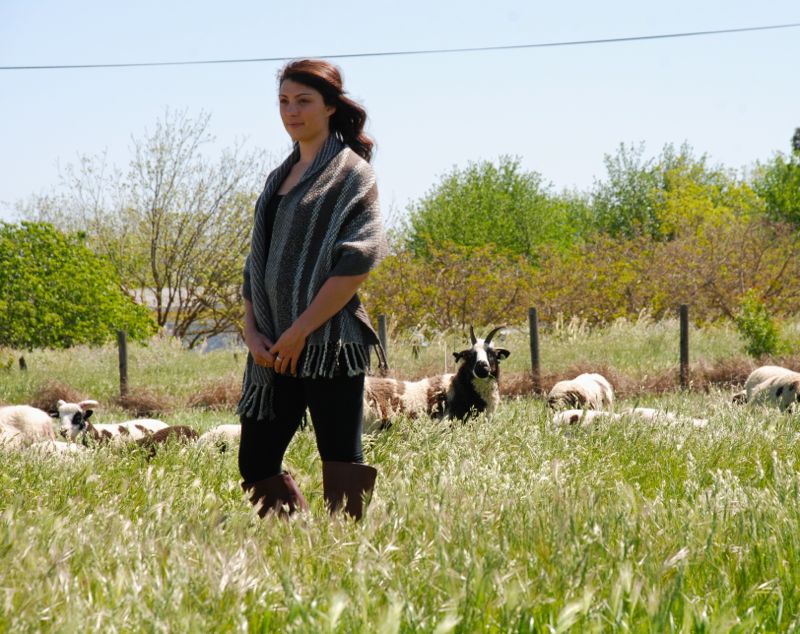
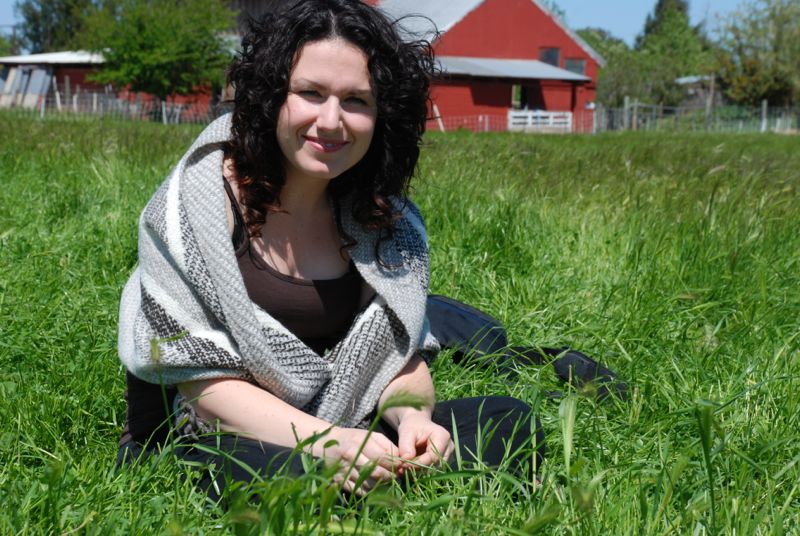
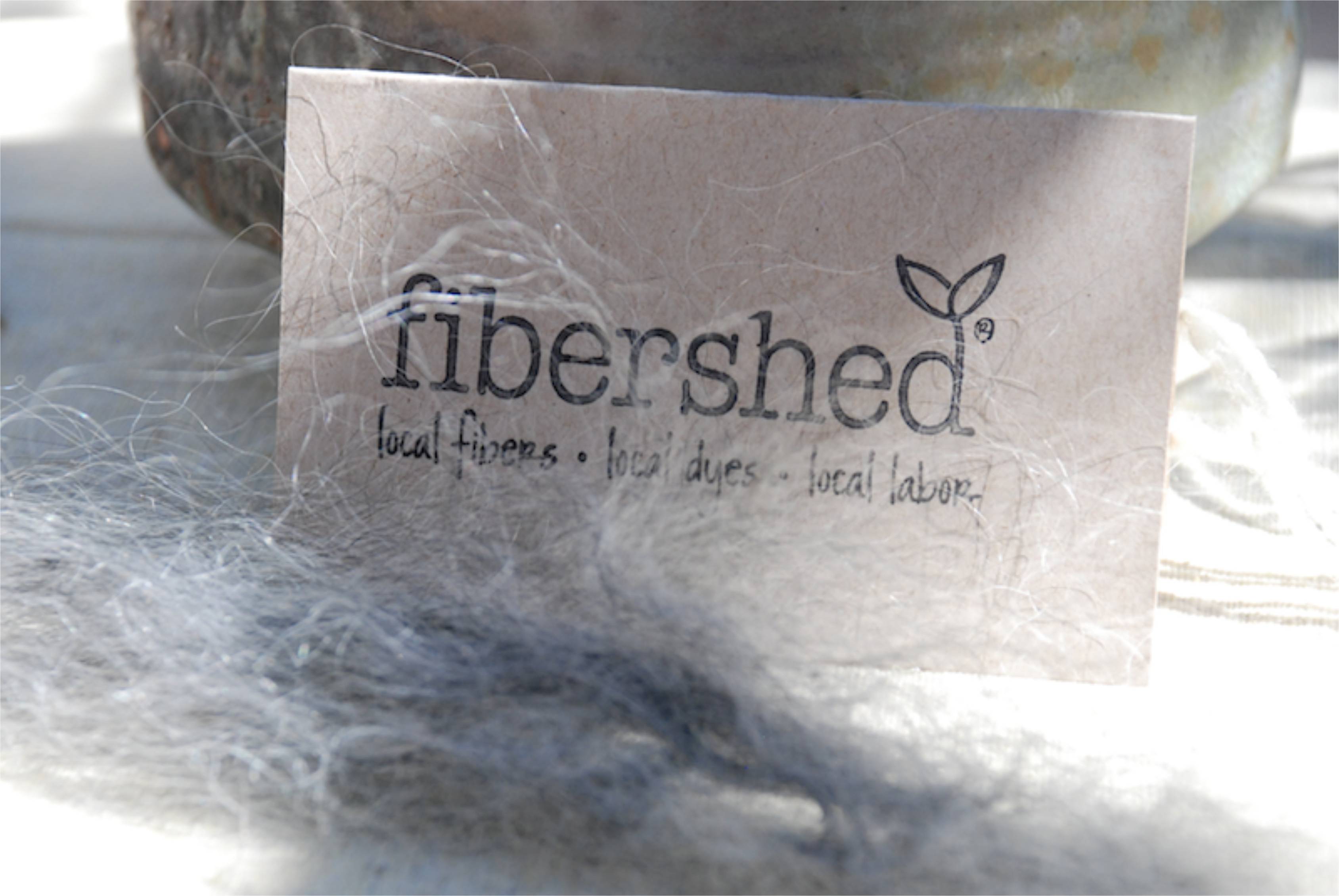
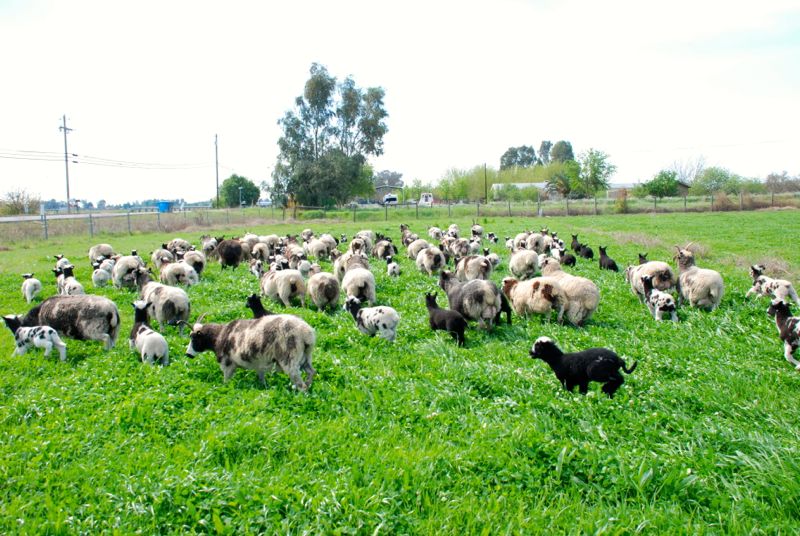
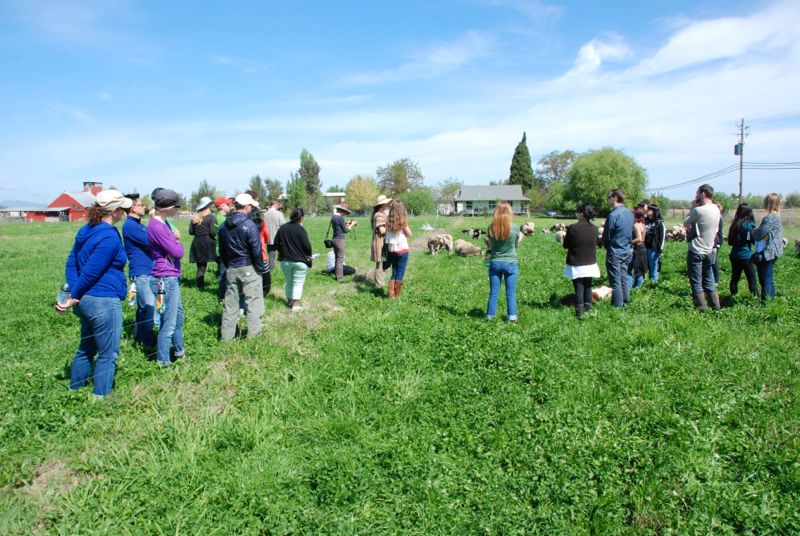
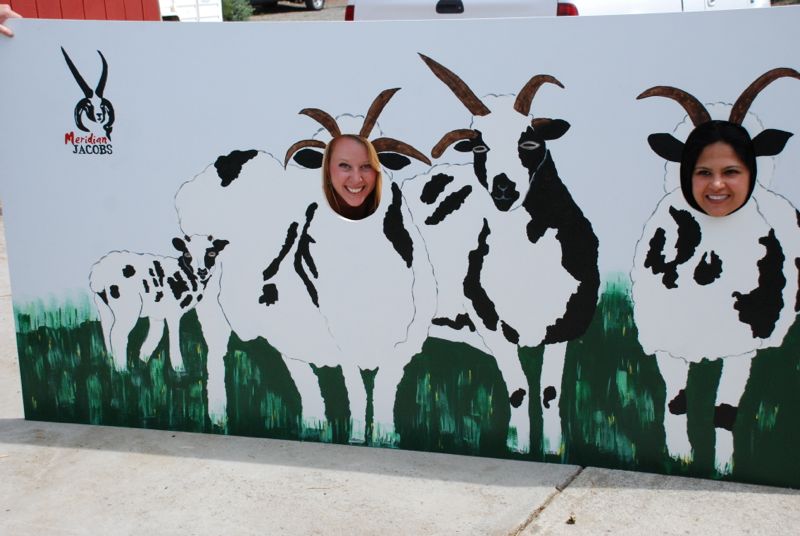
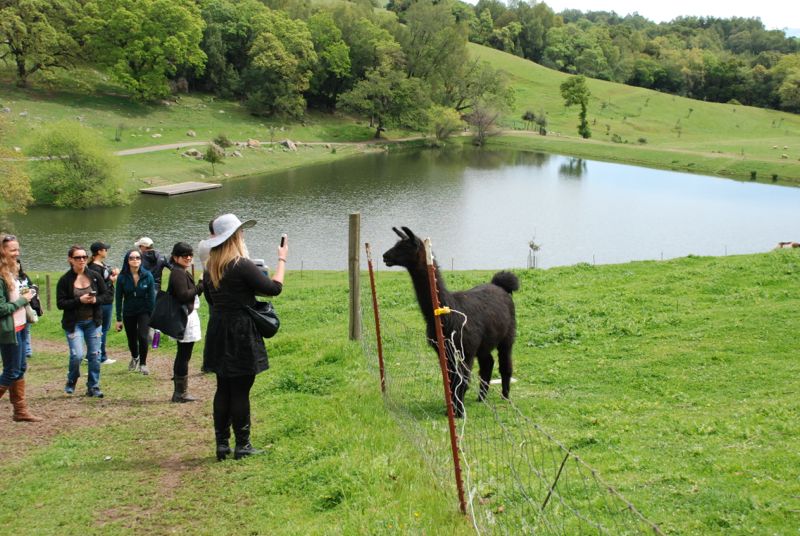

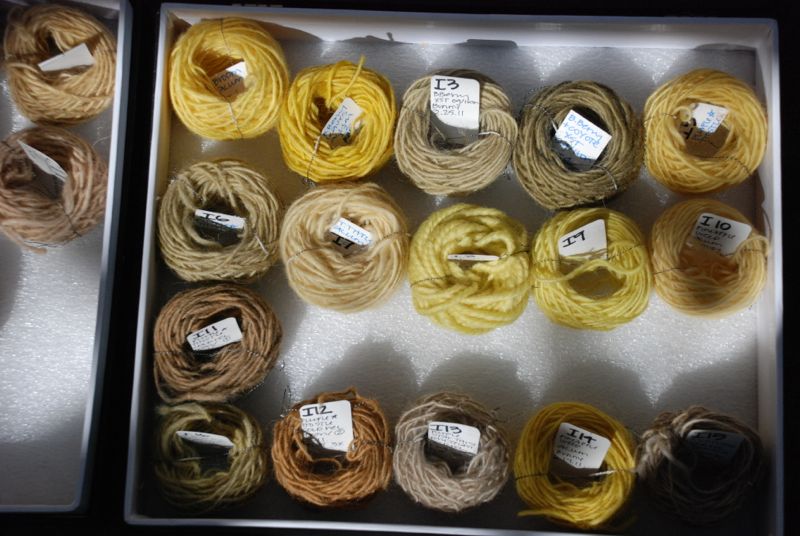
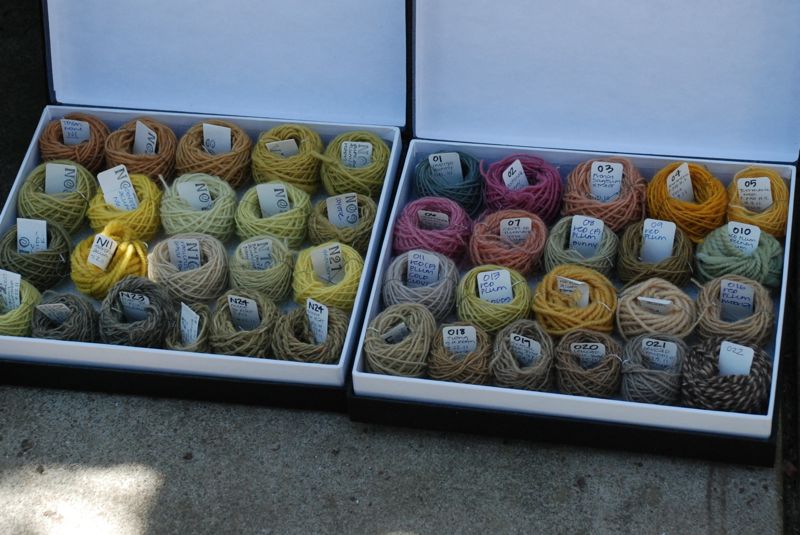
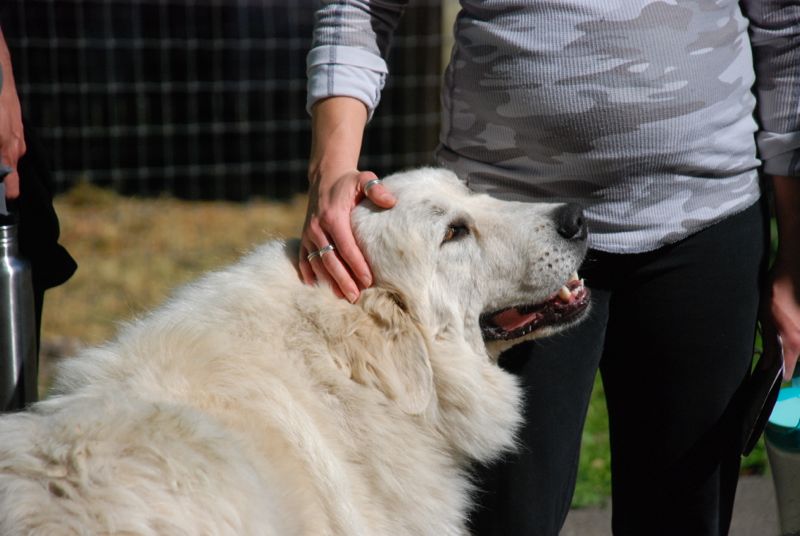
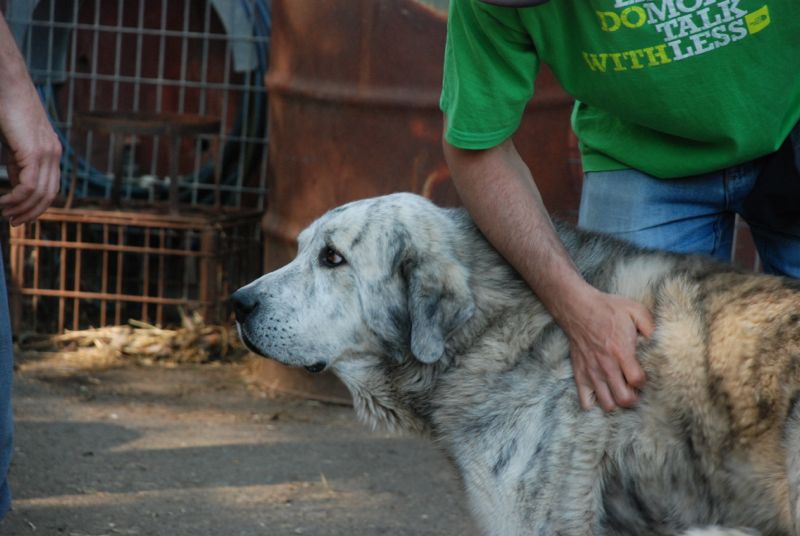
 Mary let out the bottle babies…
Mary let out the bottle babies…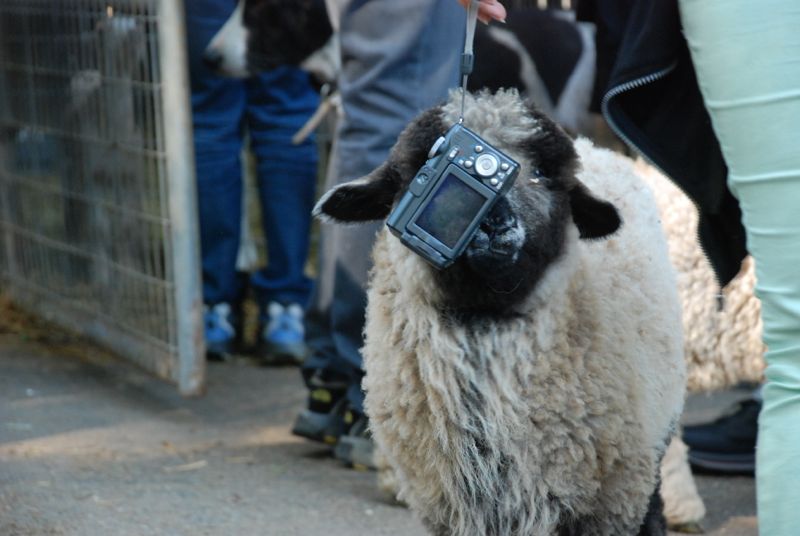
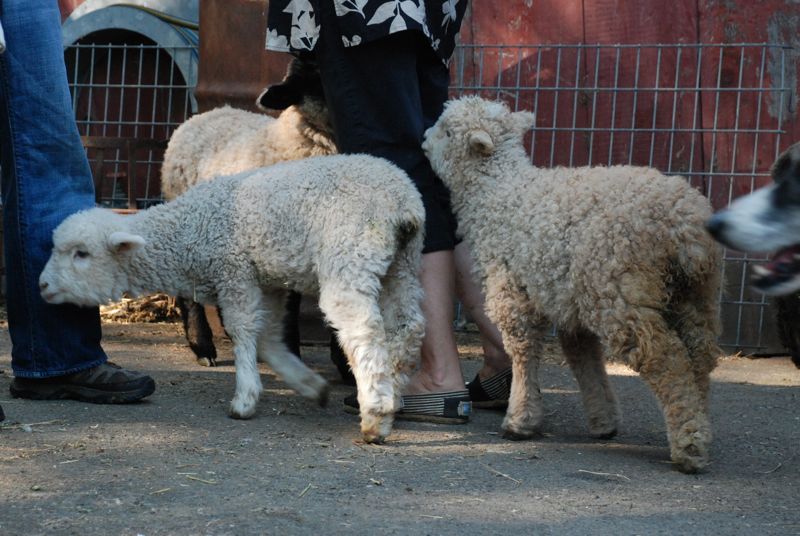
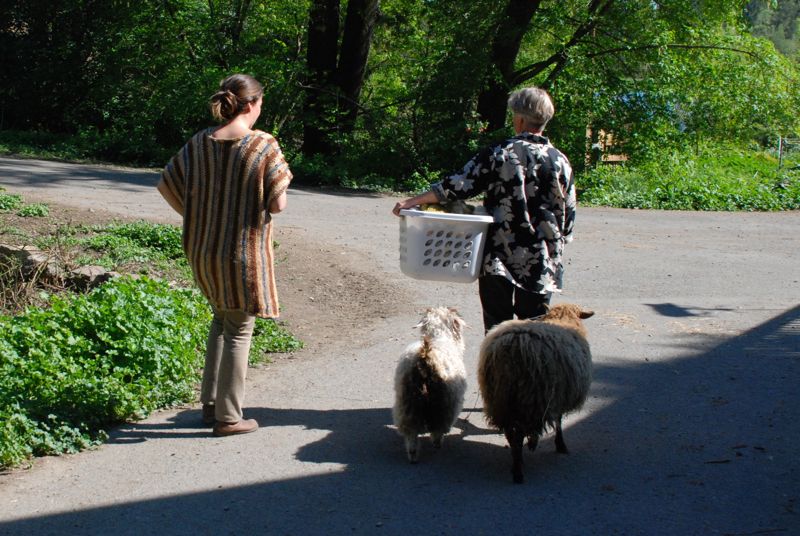
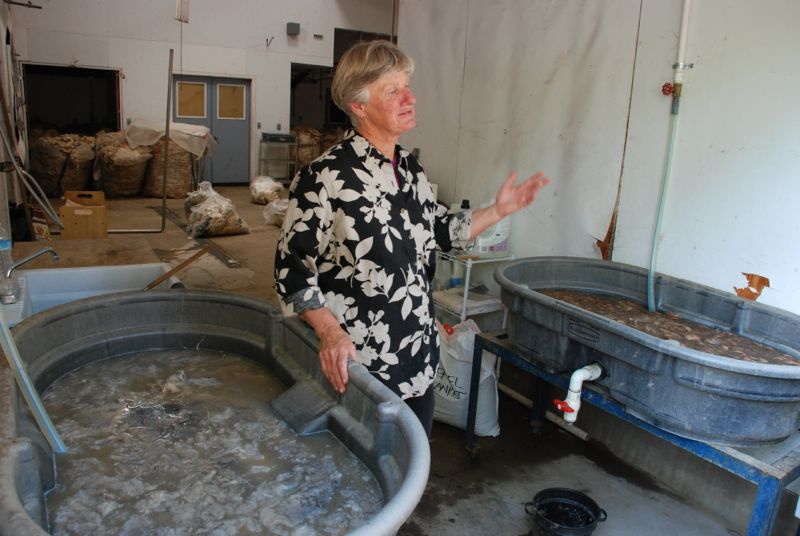
 Here is where the fleeces are dried. Mary had several fleeces spread out so that the visitors could handle them and feel the characteristics that we’d been talking about all day.
Here is where the fleeces are dried. Mary had several fleeces spread out so that the visitors could handle them and feel the characteristics that we’d been talking about all day.